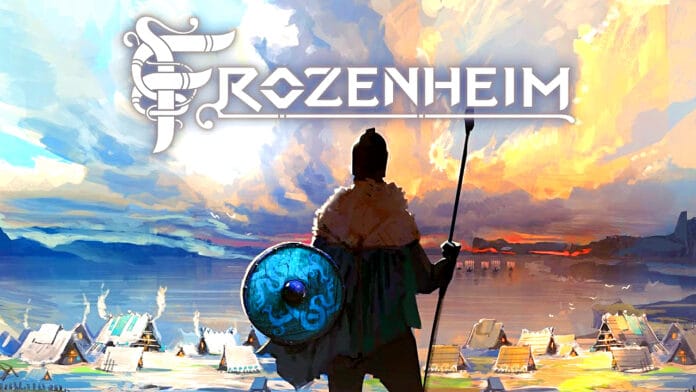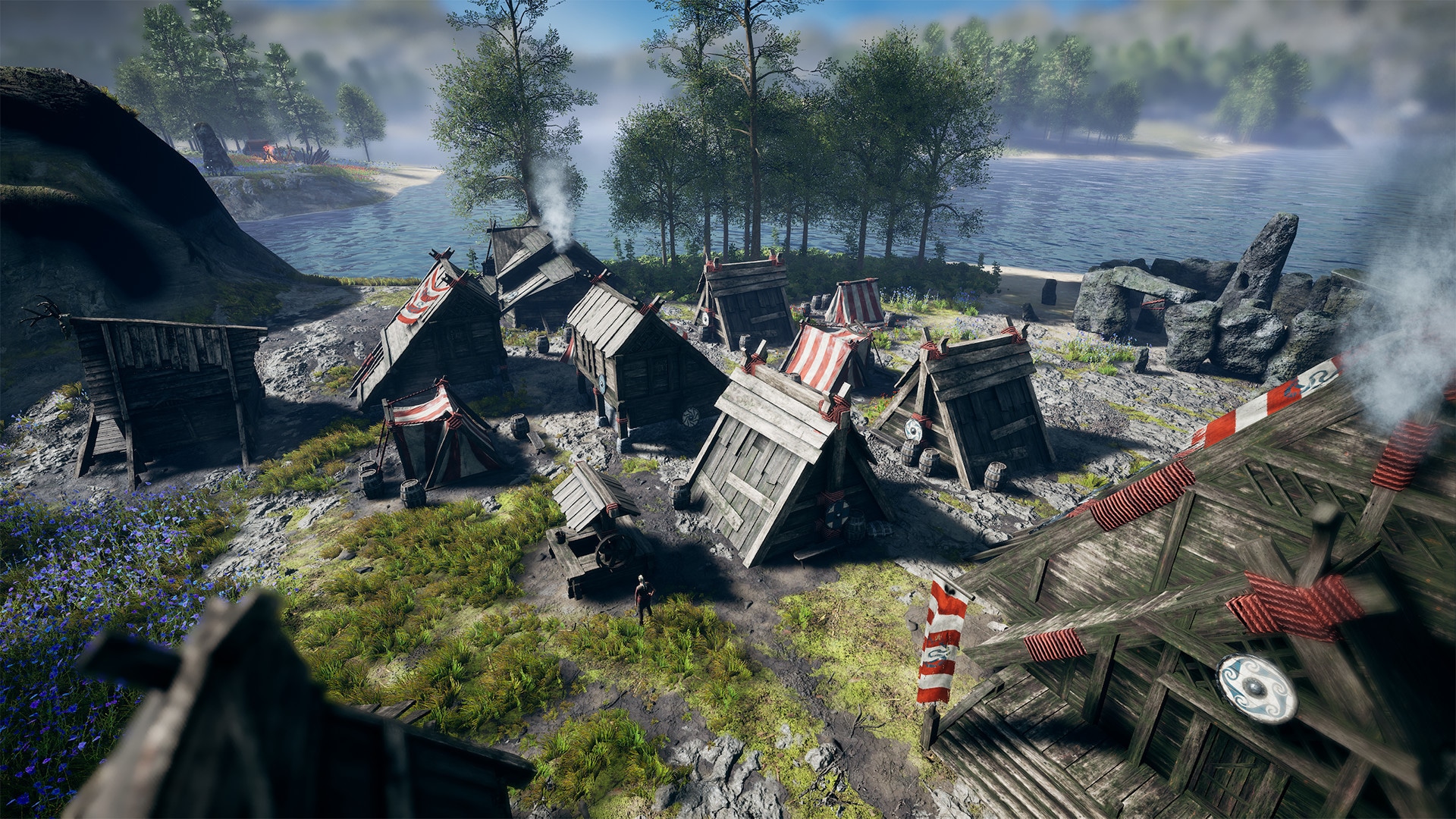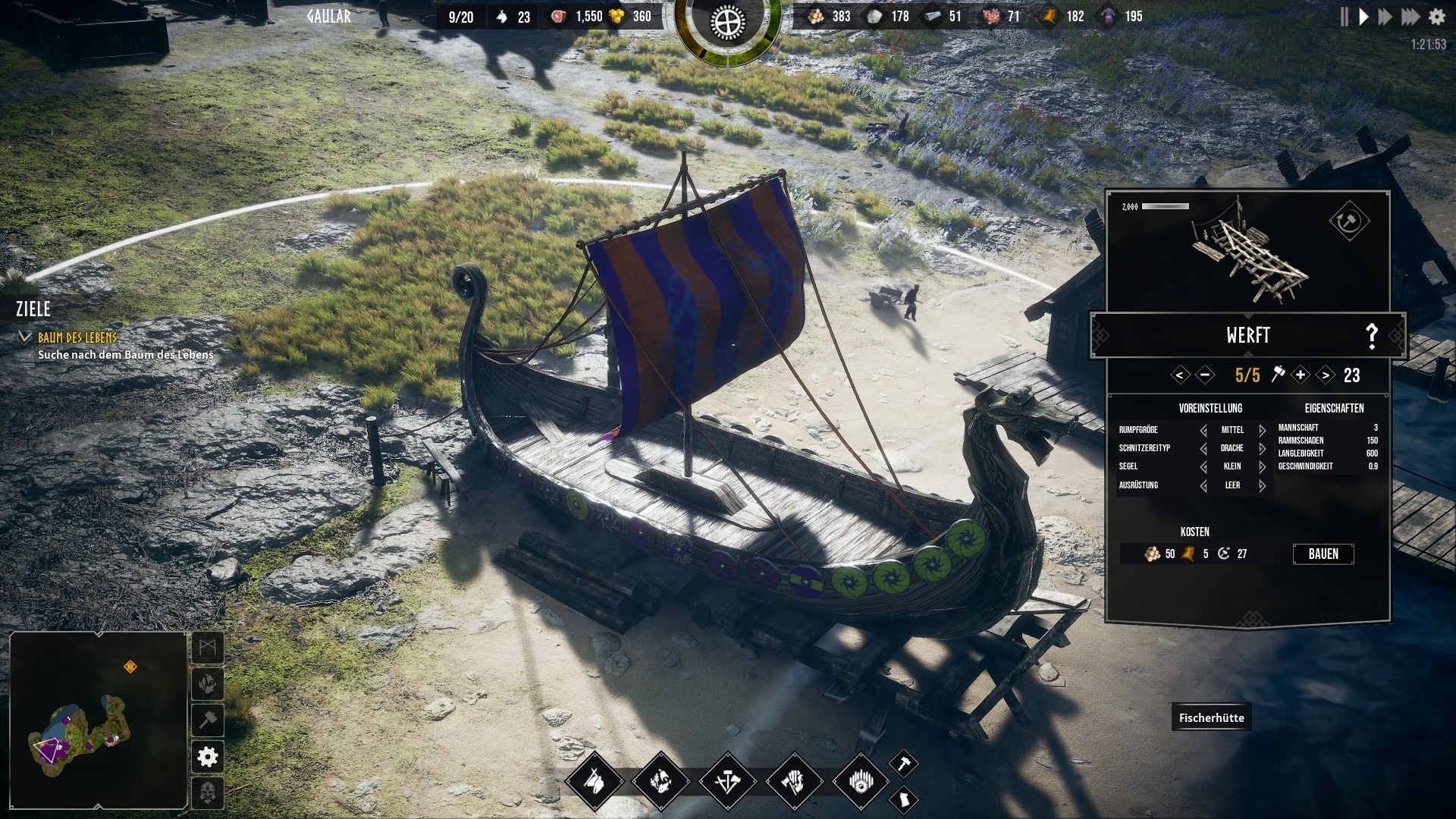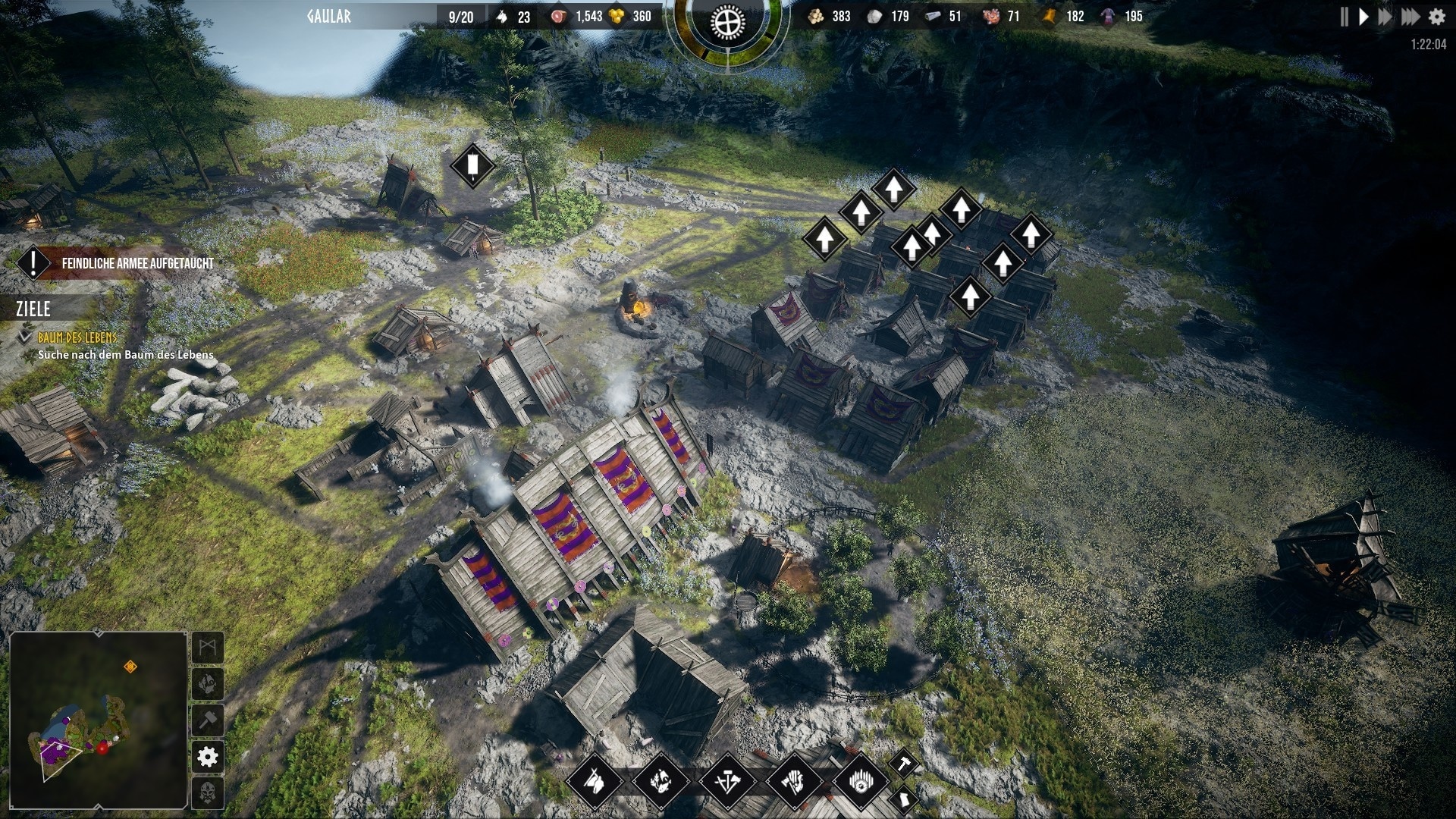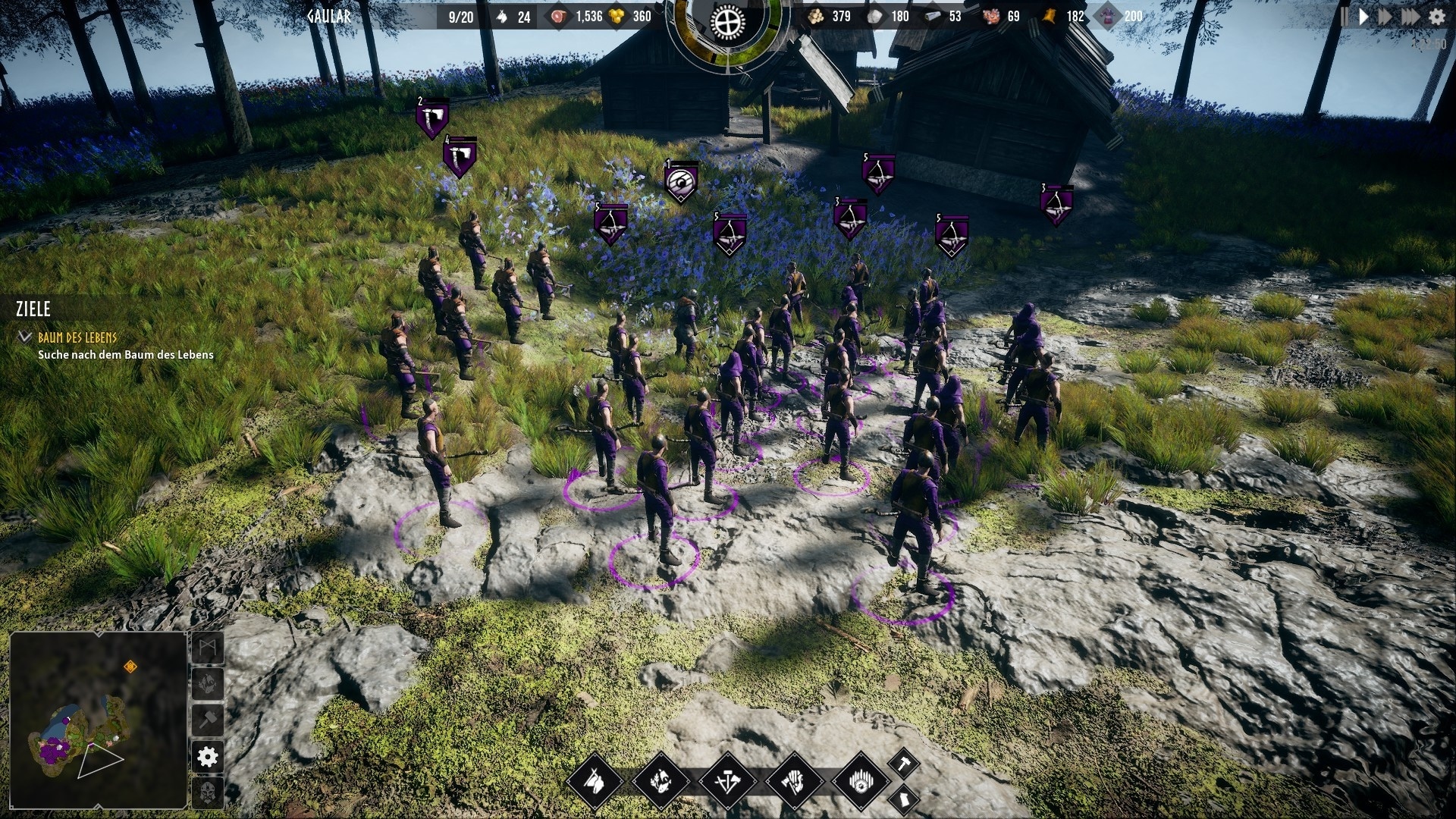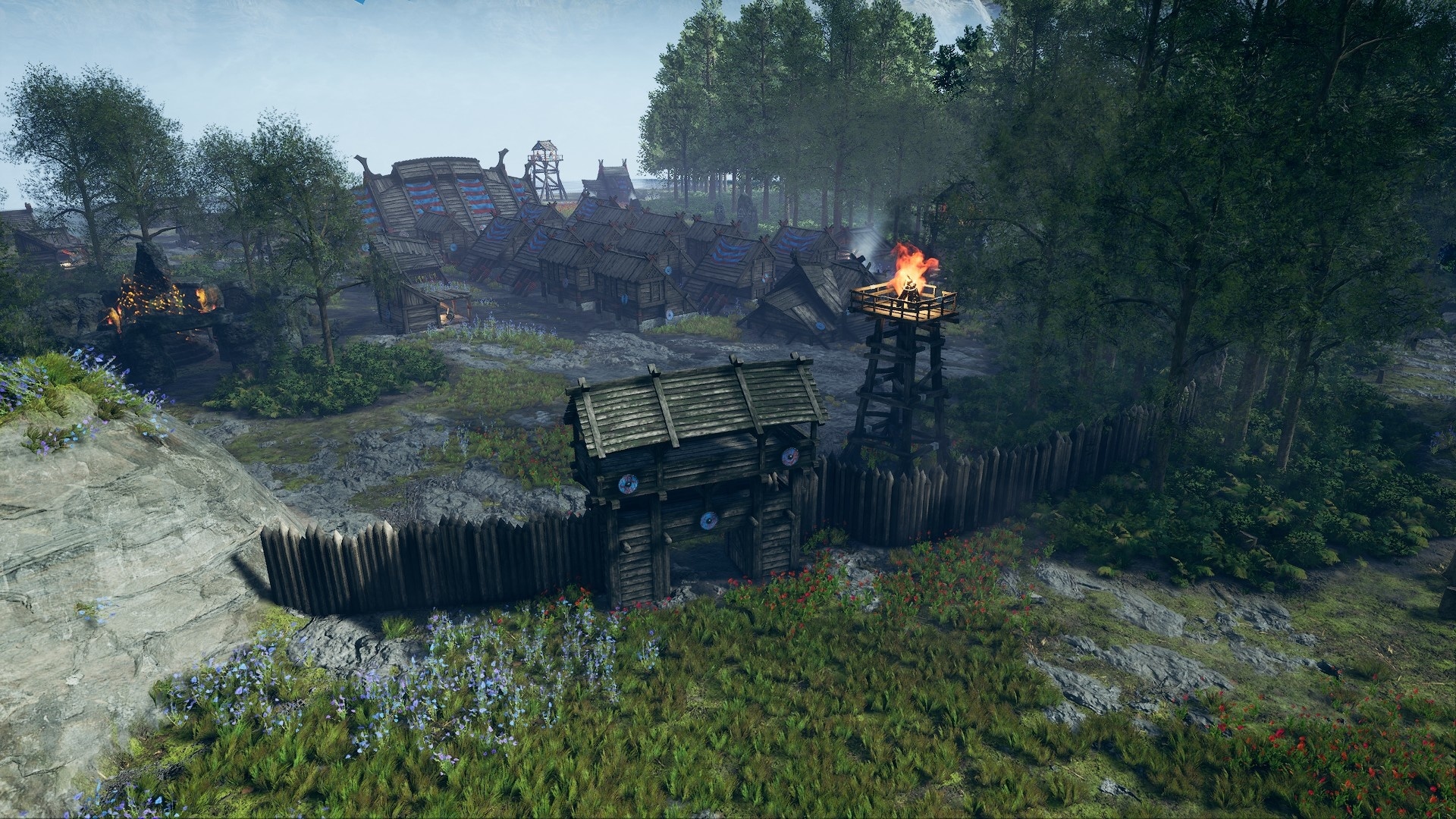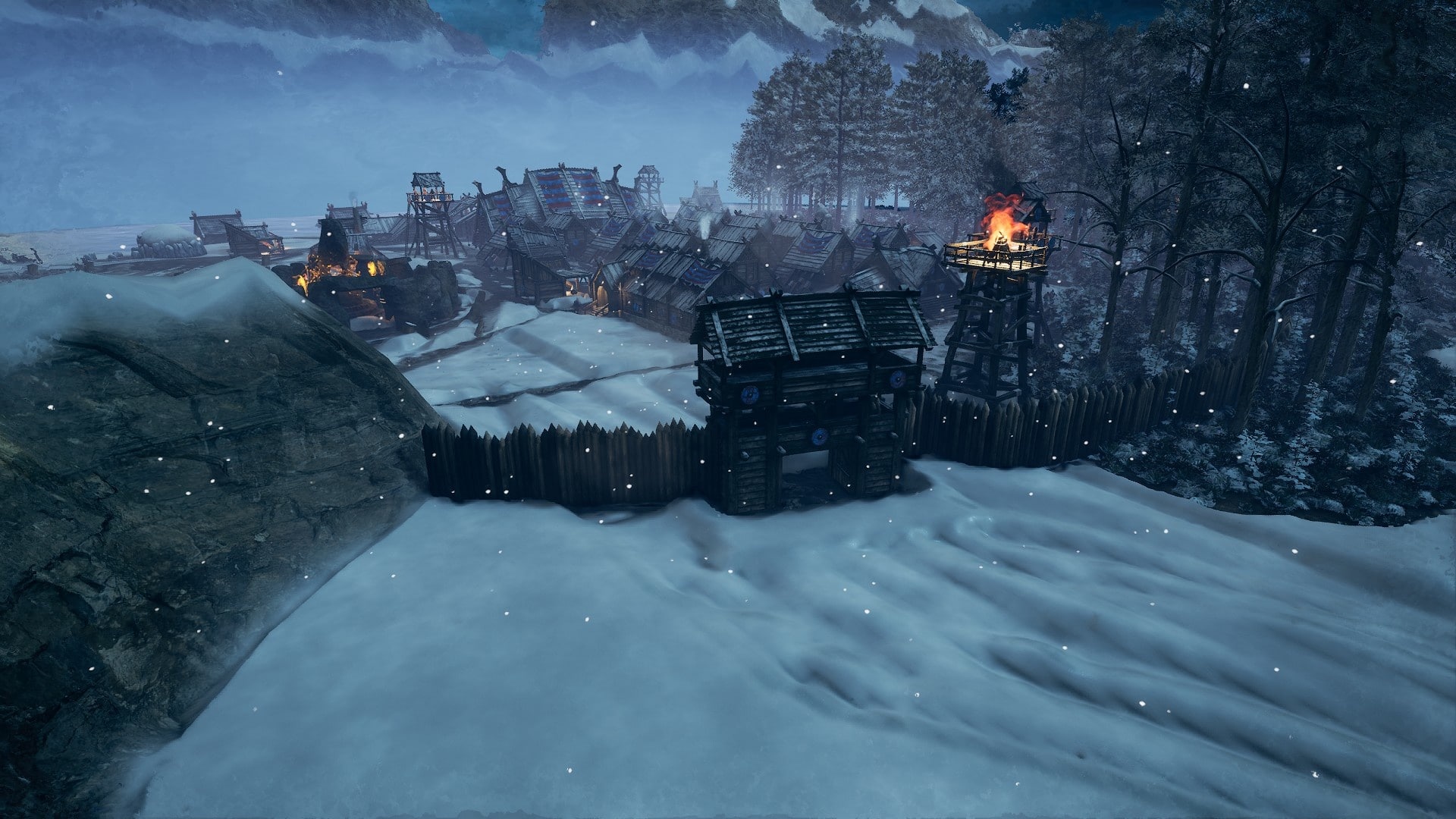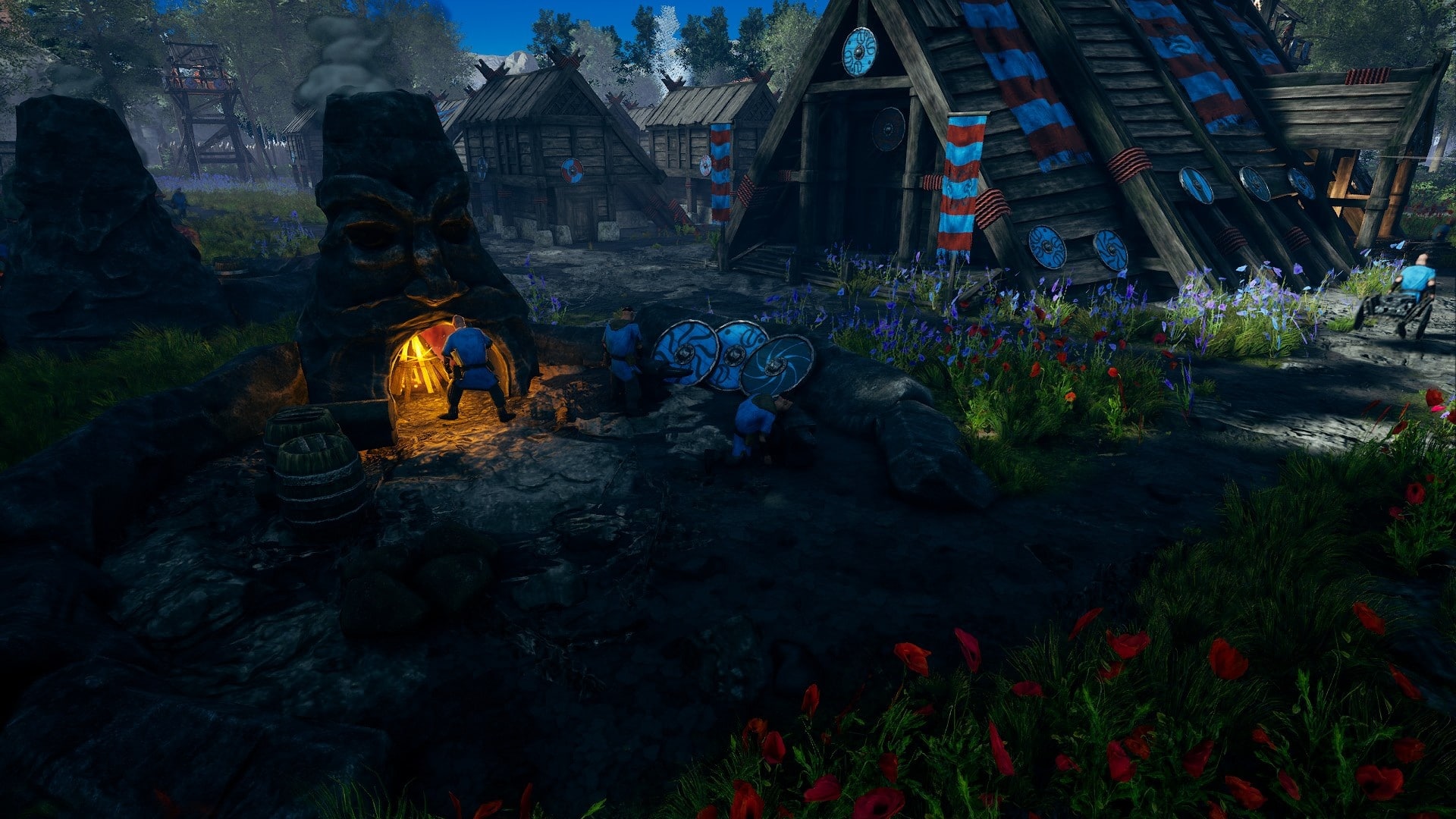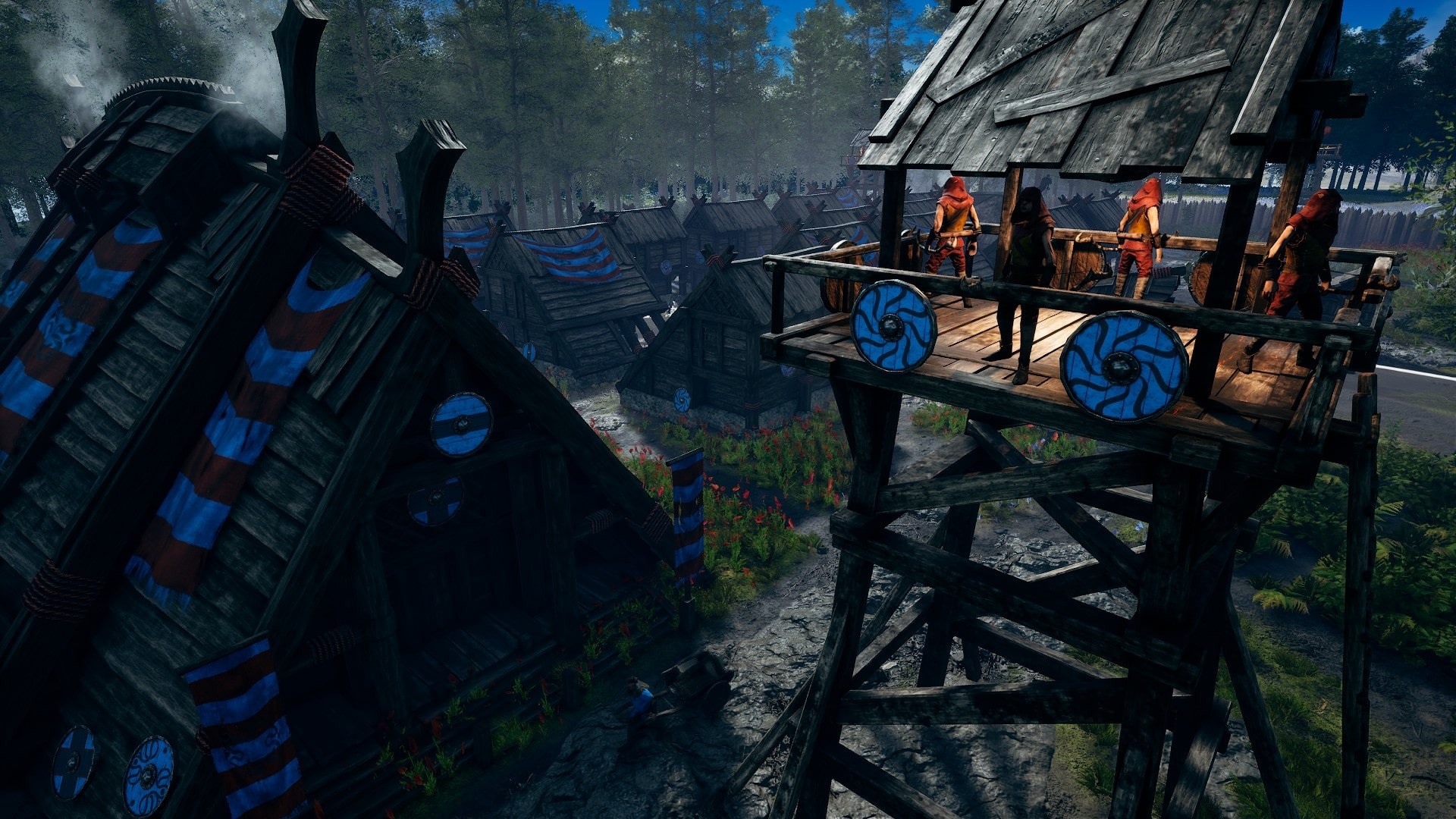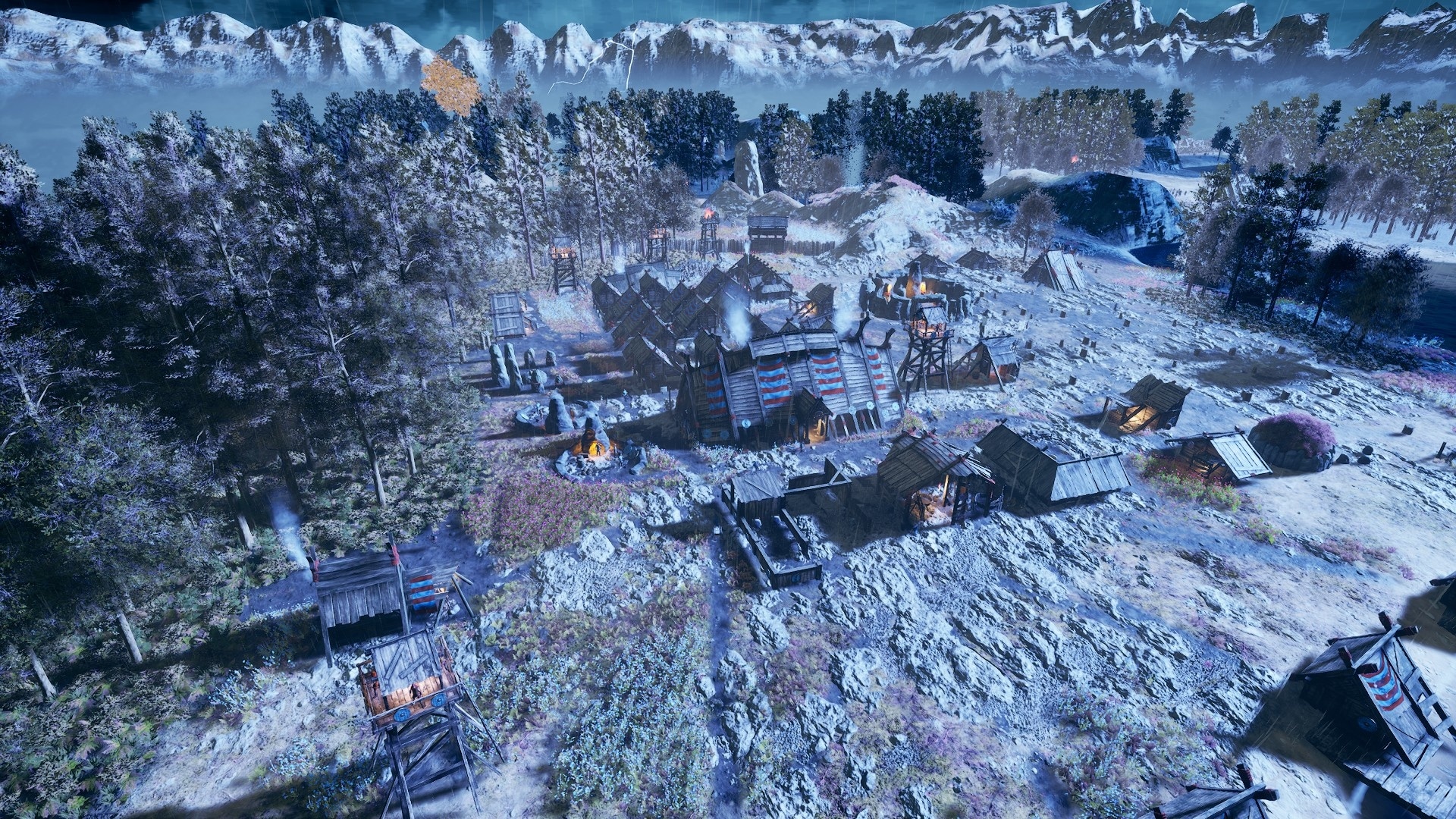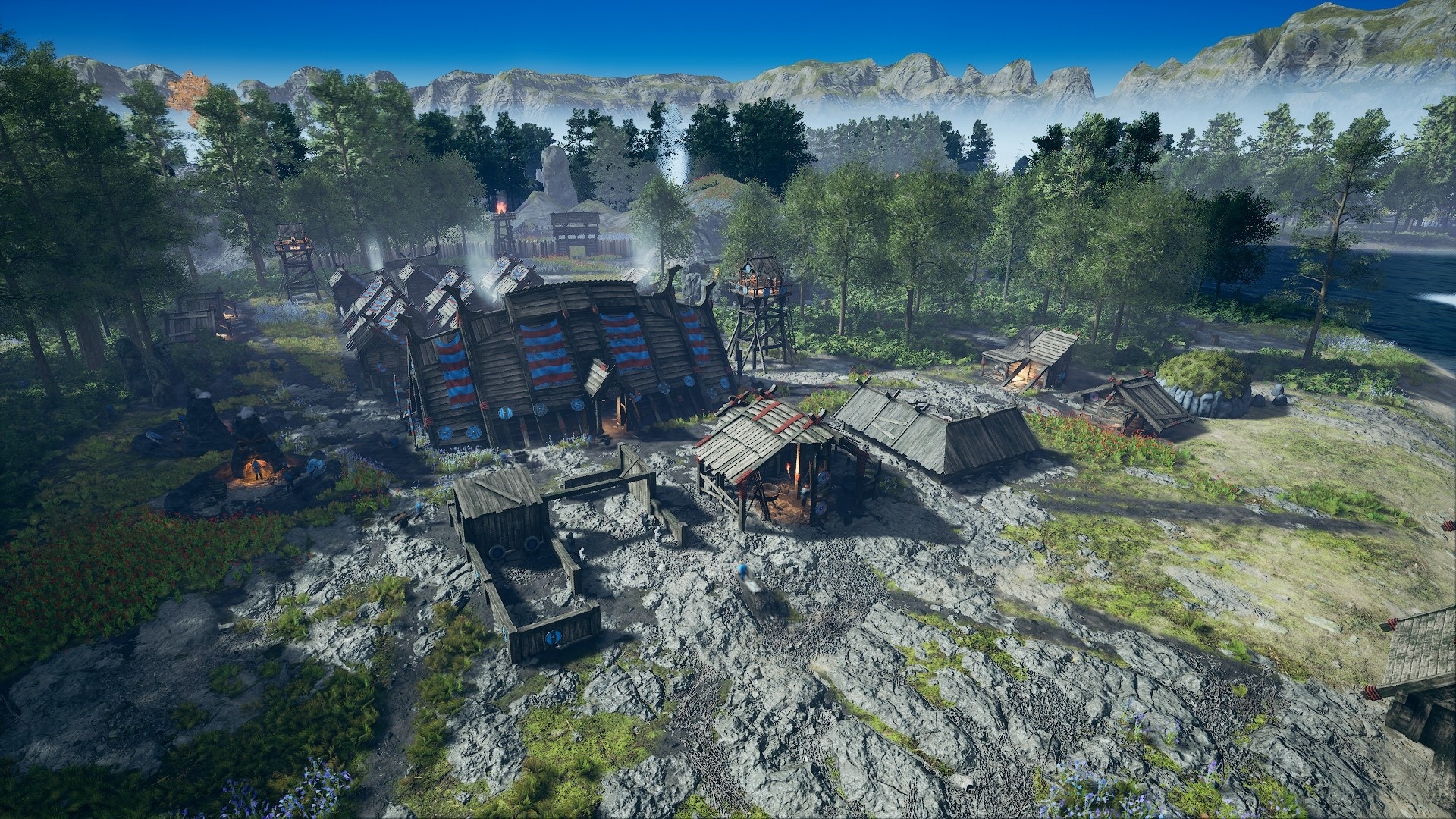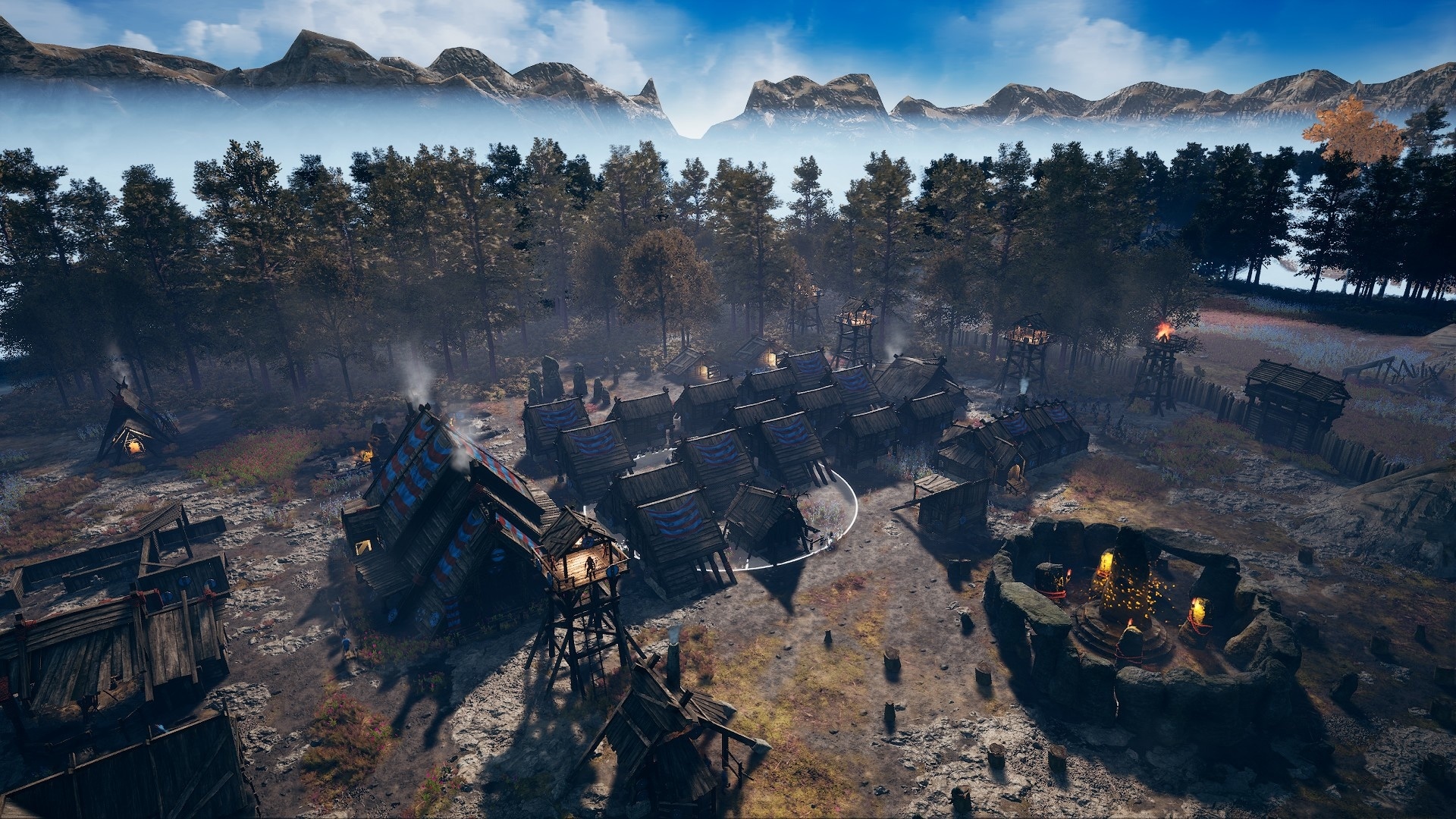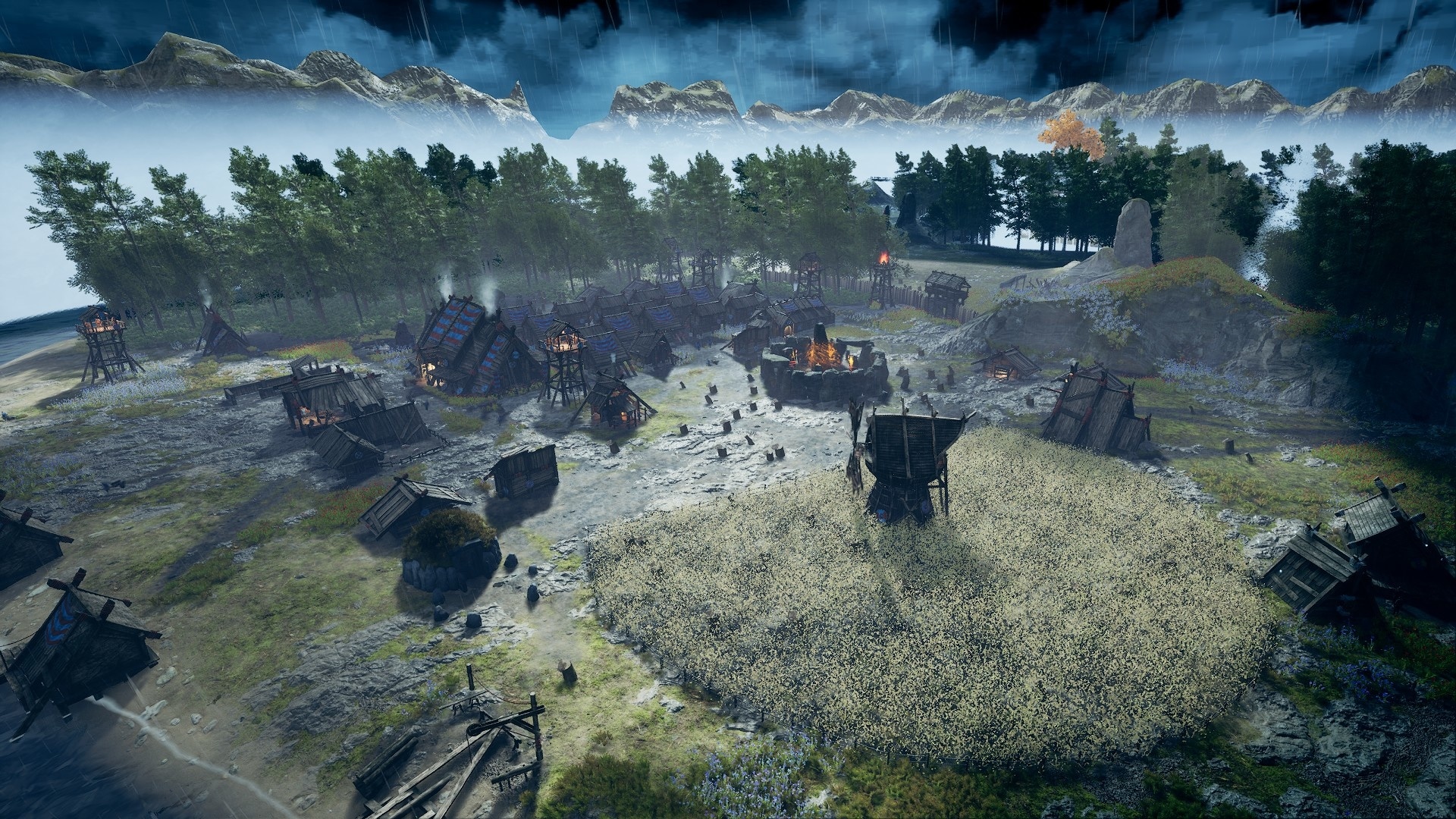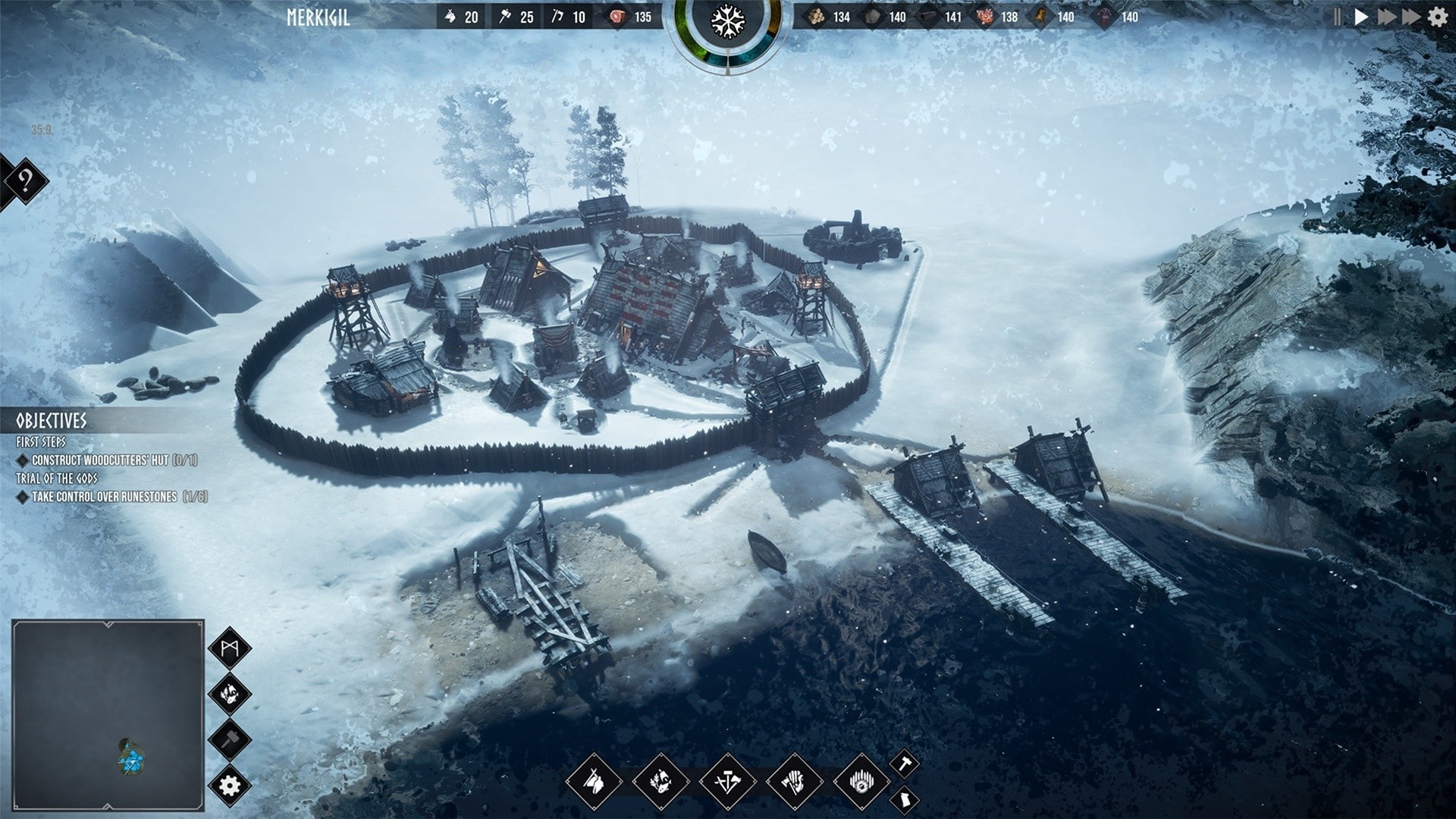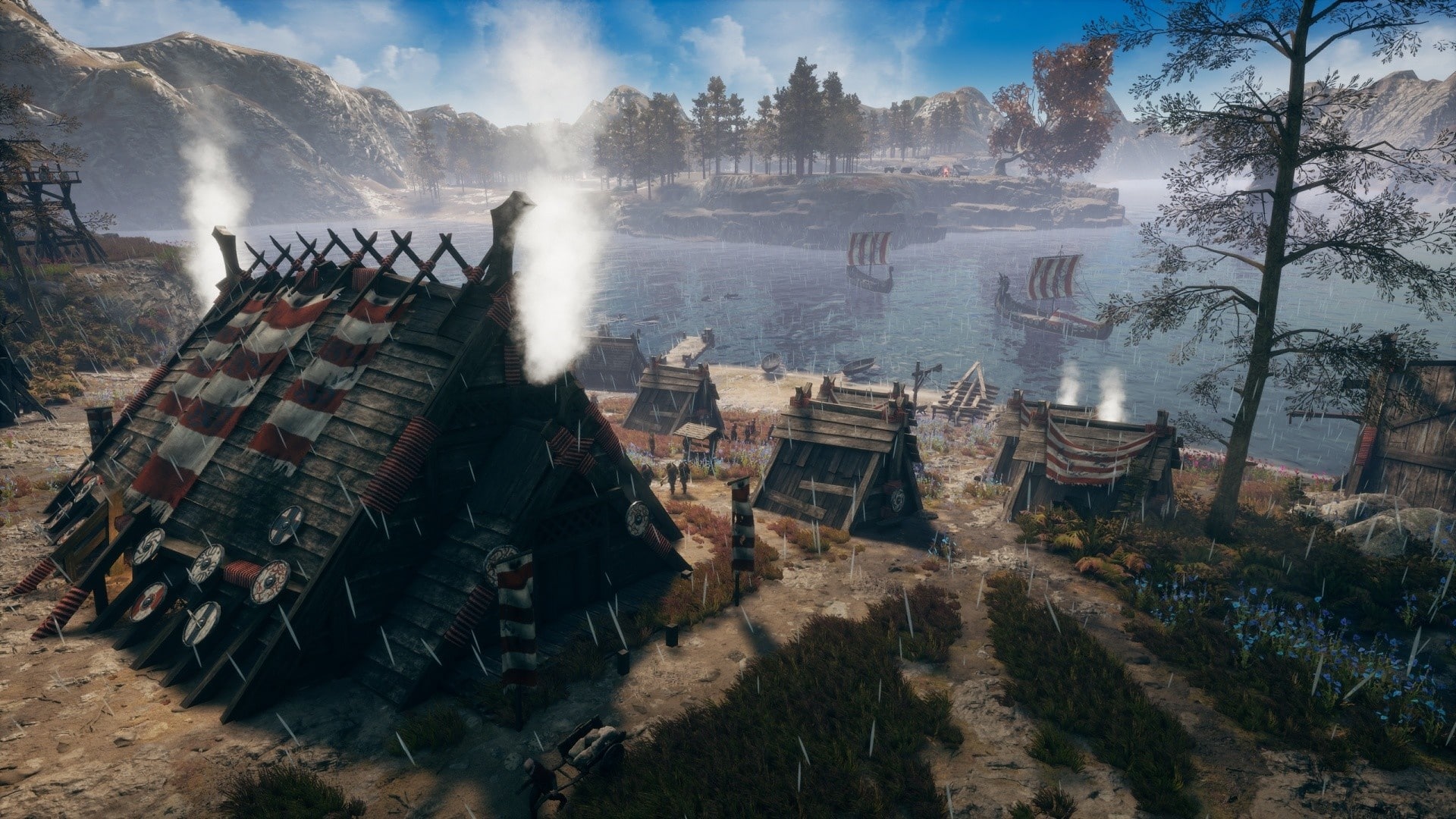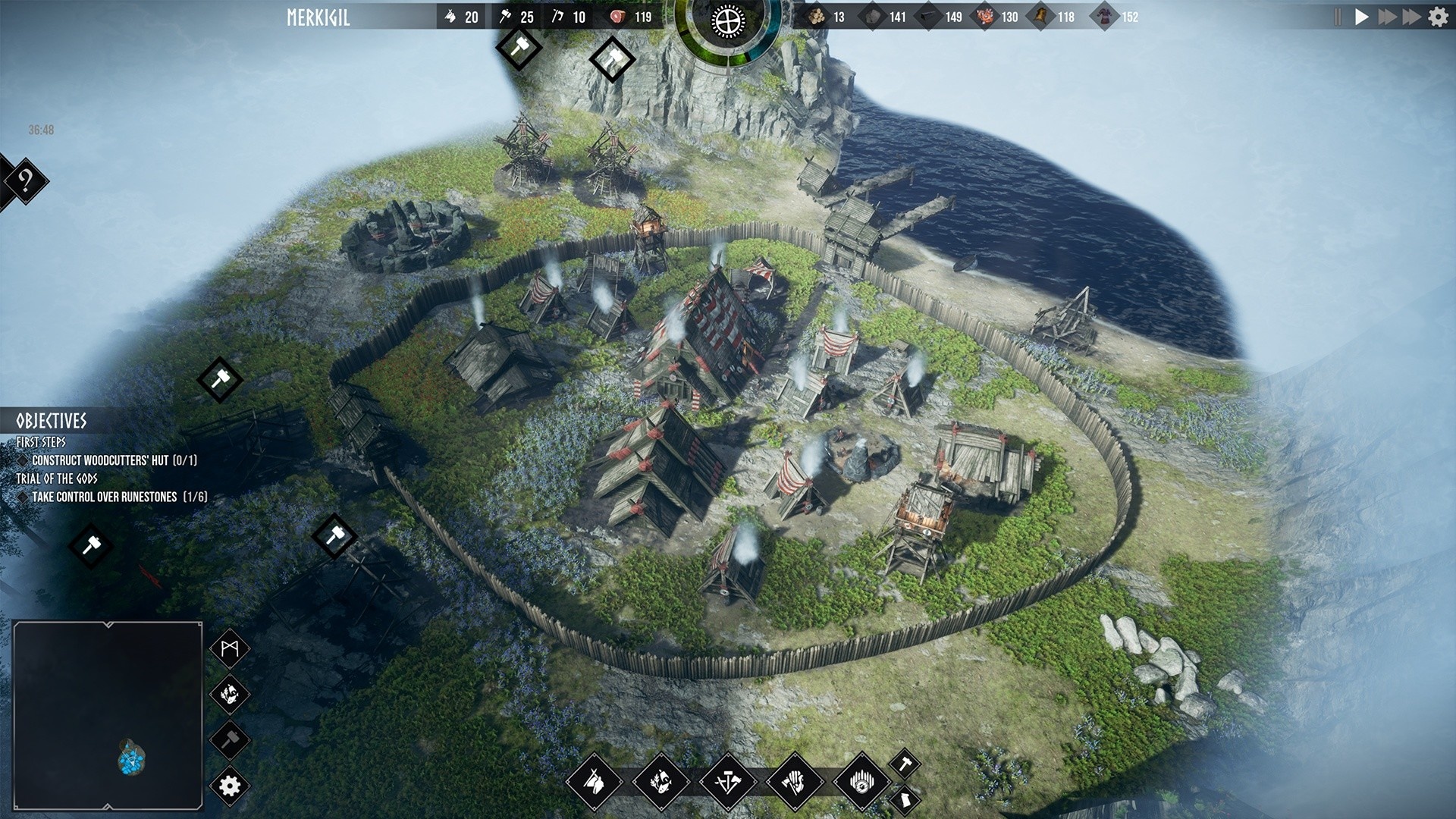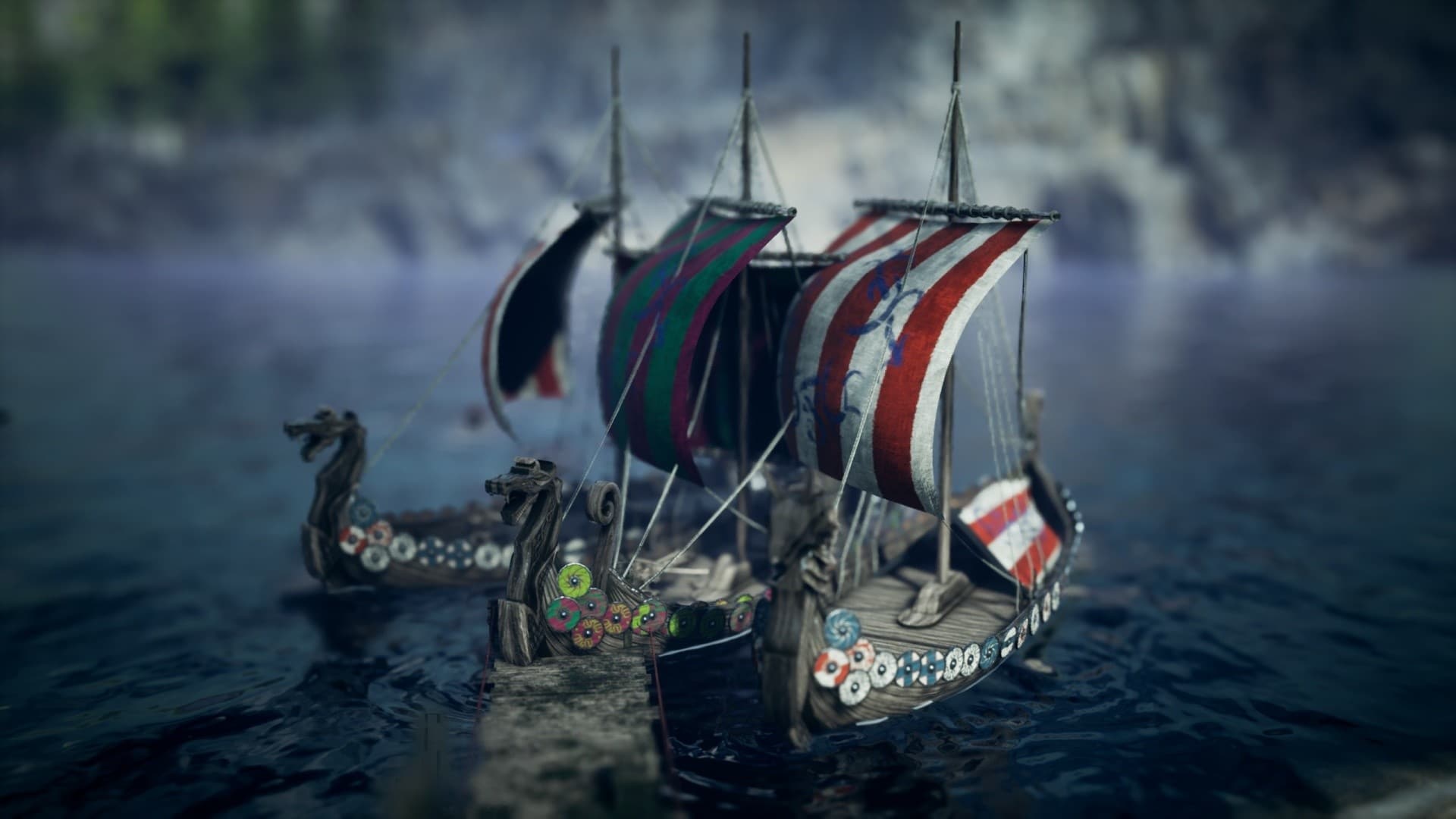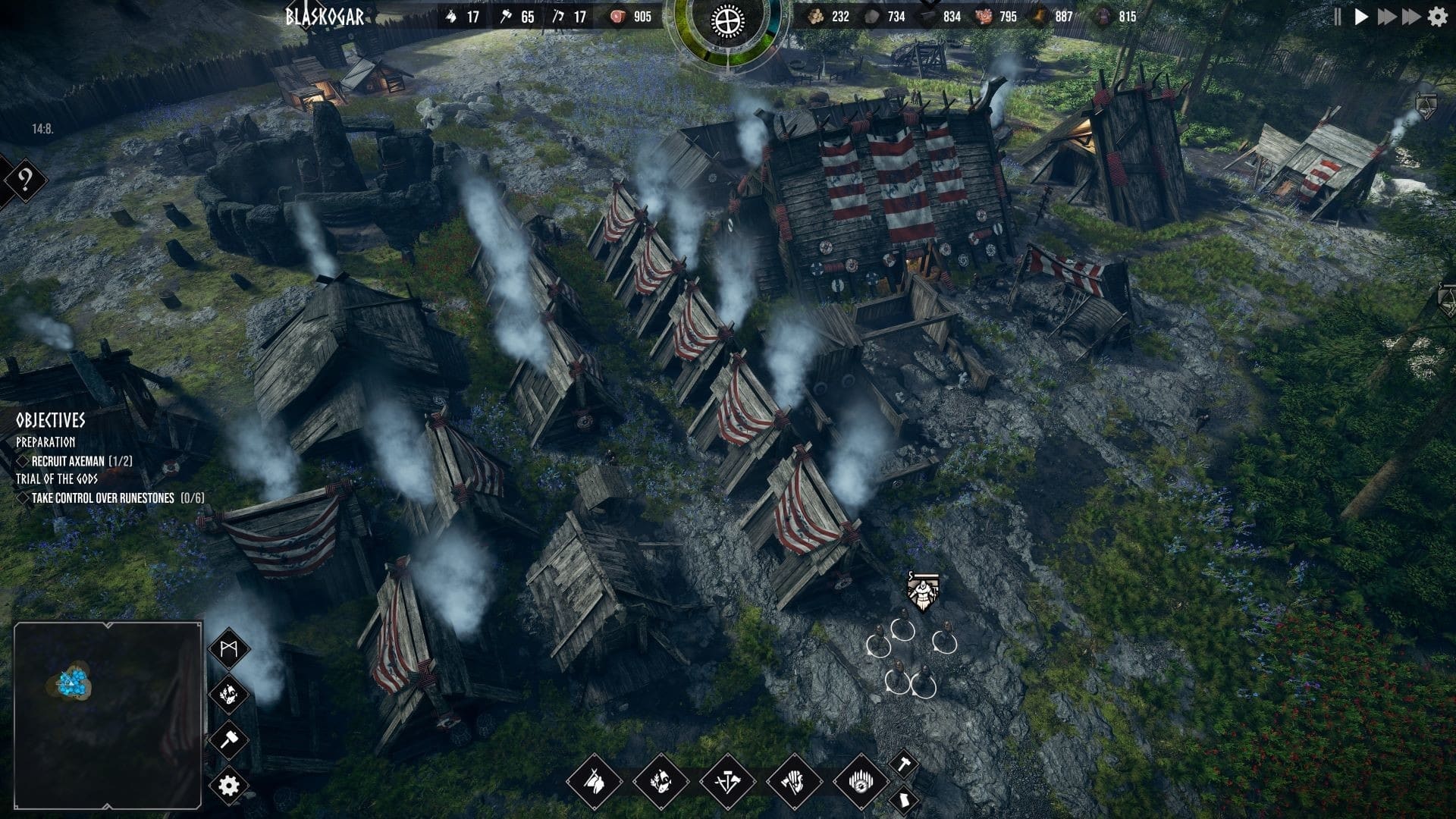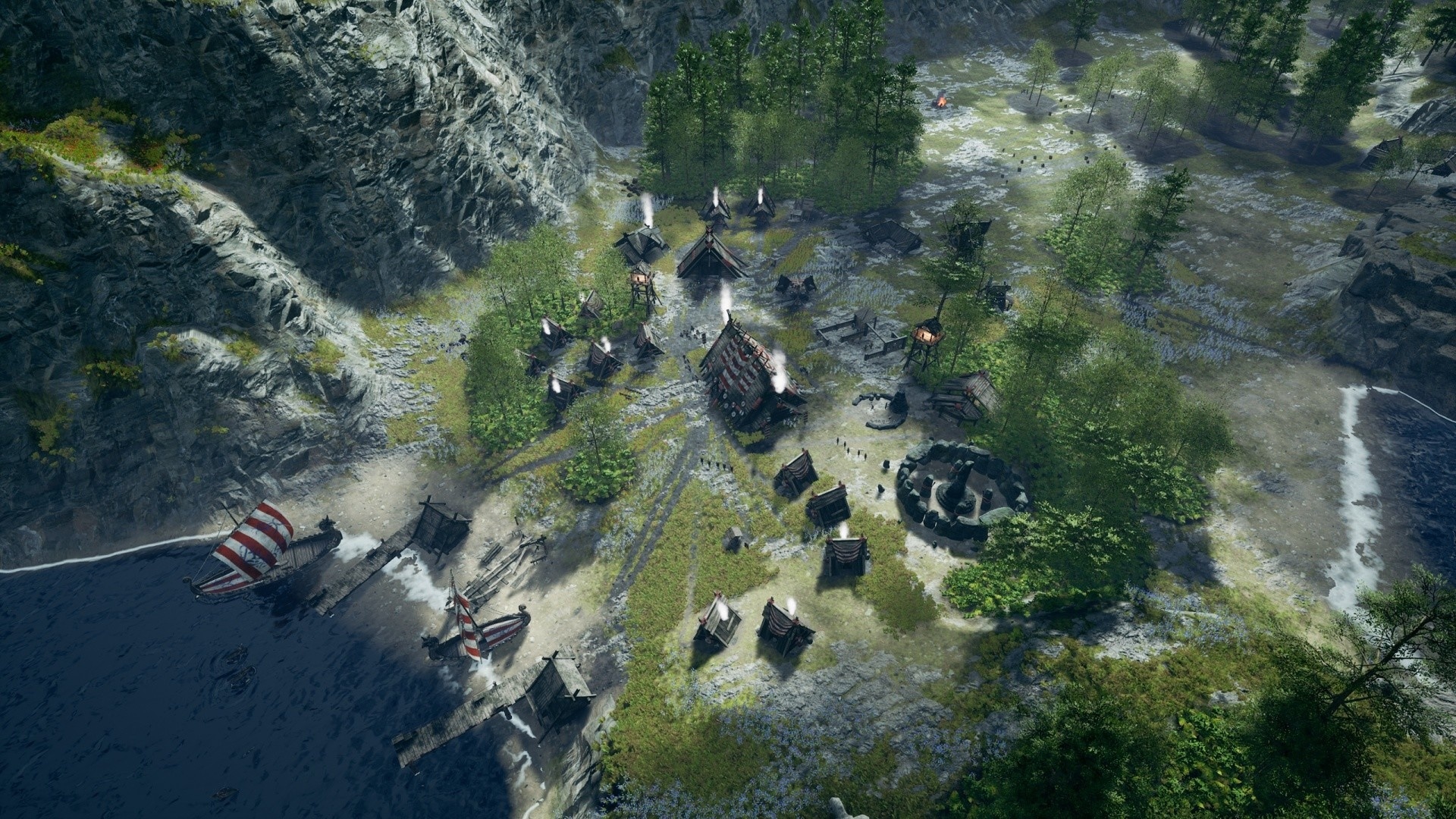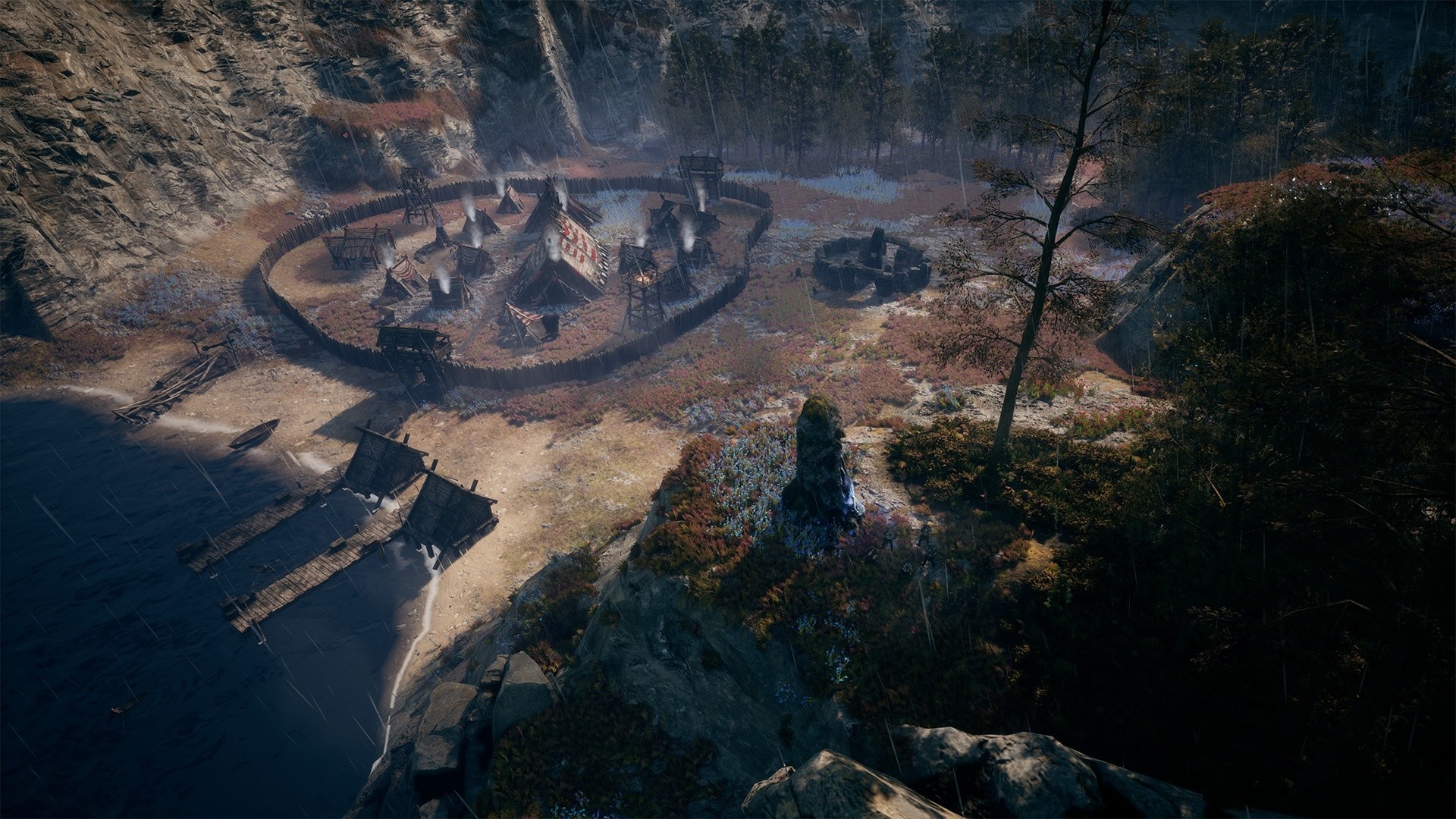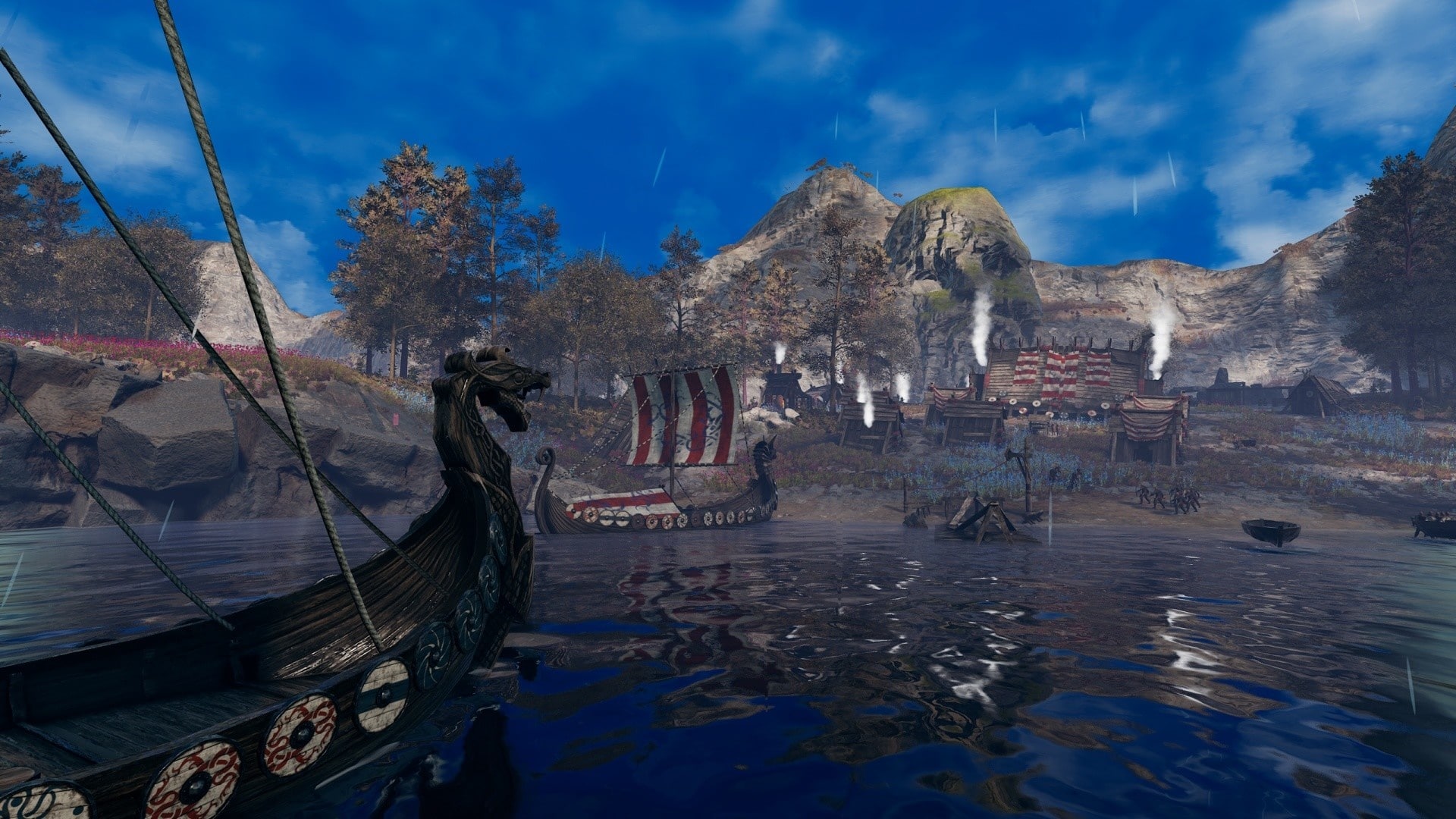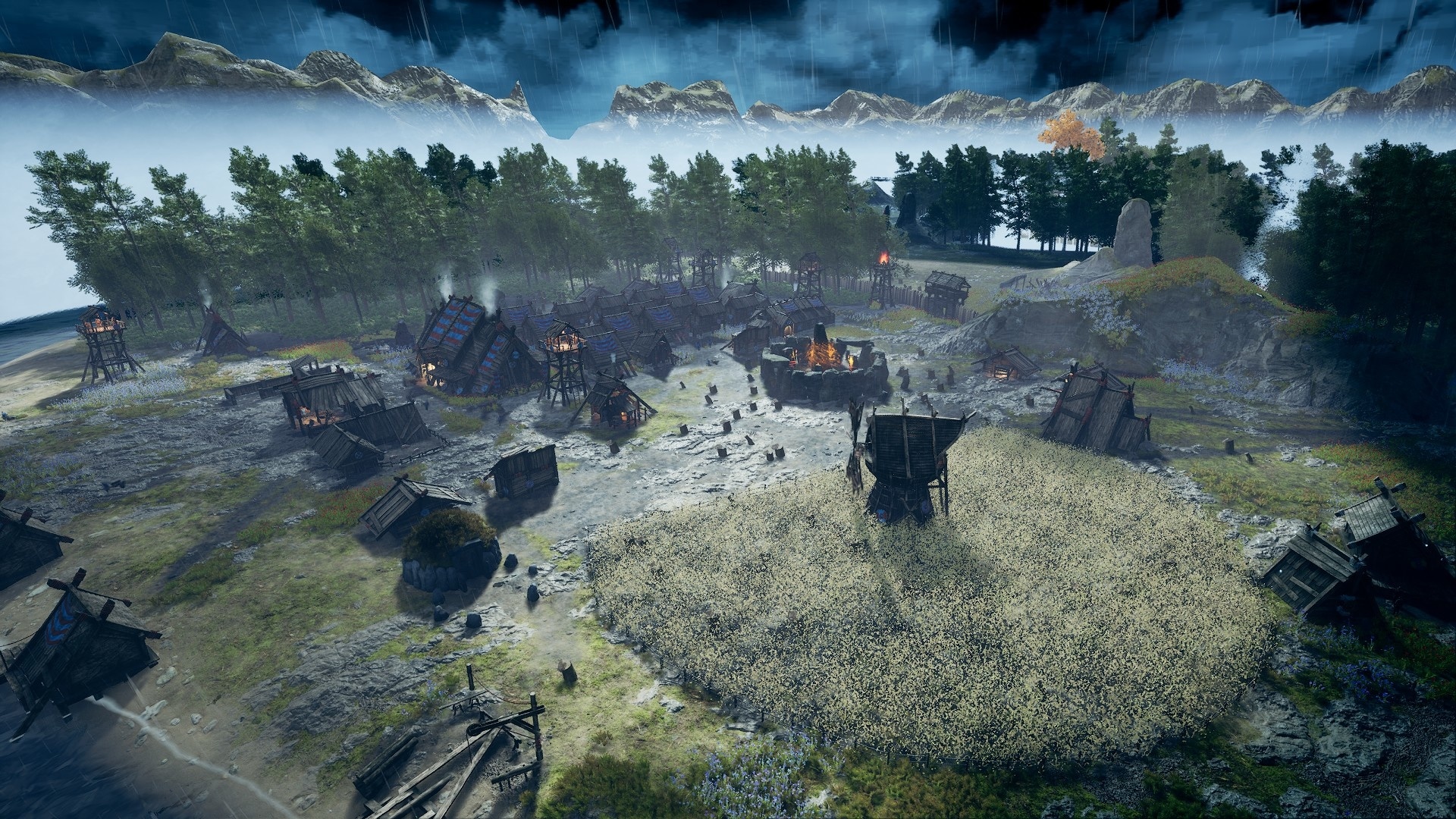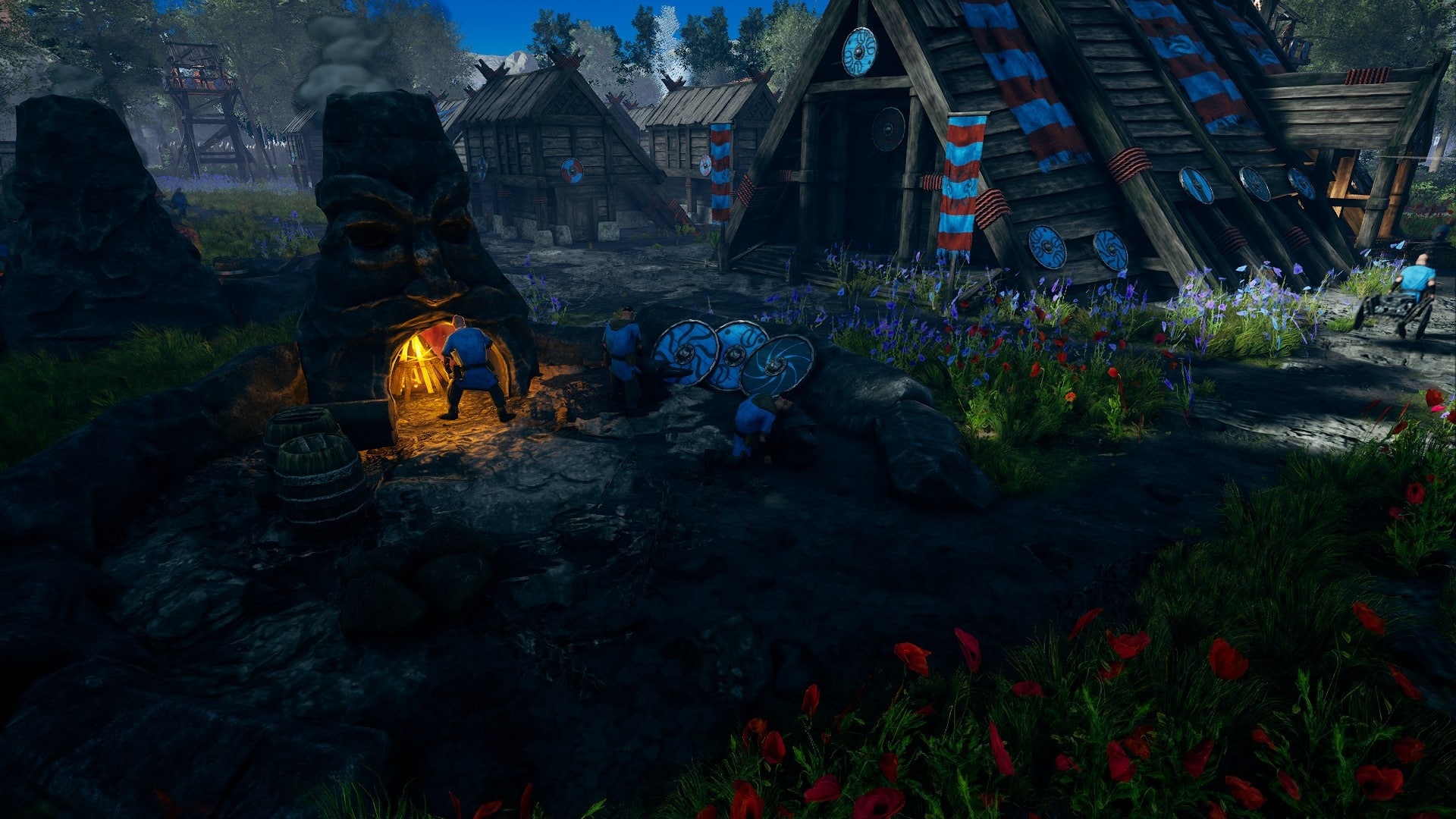After a successful Early Access phase, the building strategy game does a lot right. However, something is missing for the really big hit, as the test shows.
A good year ago, developer Paranoid Interactive surprised us with the Early Access version of Frozenheim – in the wake of Valheim”s success, this outrageously good-looking building game with Vikings suddenly appeared on the scene. Players took over a tribe of Nordic seafarers, built settlements, collected resources, raised armies and faced their enemies in battle. The launch trailer provides an overview:
Accordingly, our Early Access test of Frozenheim at the time attested to the strategy game”s great potential. However, both the content and the technical state of the game left many questions unanswered – first and foremost, what kind of game Frozenheim actually wants to be. And, by Odin”s bard, the answer to this question alone is a double-edged axe.
Now that the game has finally been released, we”ll take the final test: How much of its huge potential does Frozenheim 2022 realise?
Table of Contents
Finding a Nordic identity
Of the (over 2,000 Steam reviews of Frozenheim) the bulk are “mostly positive”. The average of the recently submitted 176 reviews, however, is only “balanced” (as of 27/06/2022). How can this be?
According to the developer, Frozenheim is a “city-building simulation with sophisticated management gameplay and real-time strategy battles”. That doesn”t just read like two genres are being combined here. It is an essential element of the game”s philosophy. On the one hand, Frozenheim is not a pure city-builder like Banished, but makes use of some mechanics from the surprise hit of 2014.
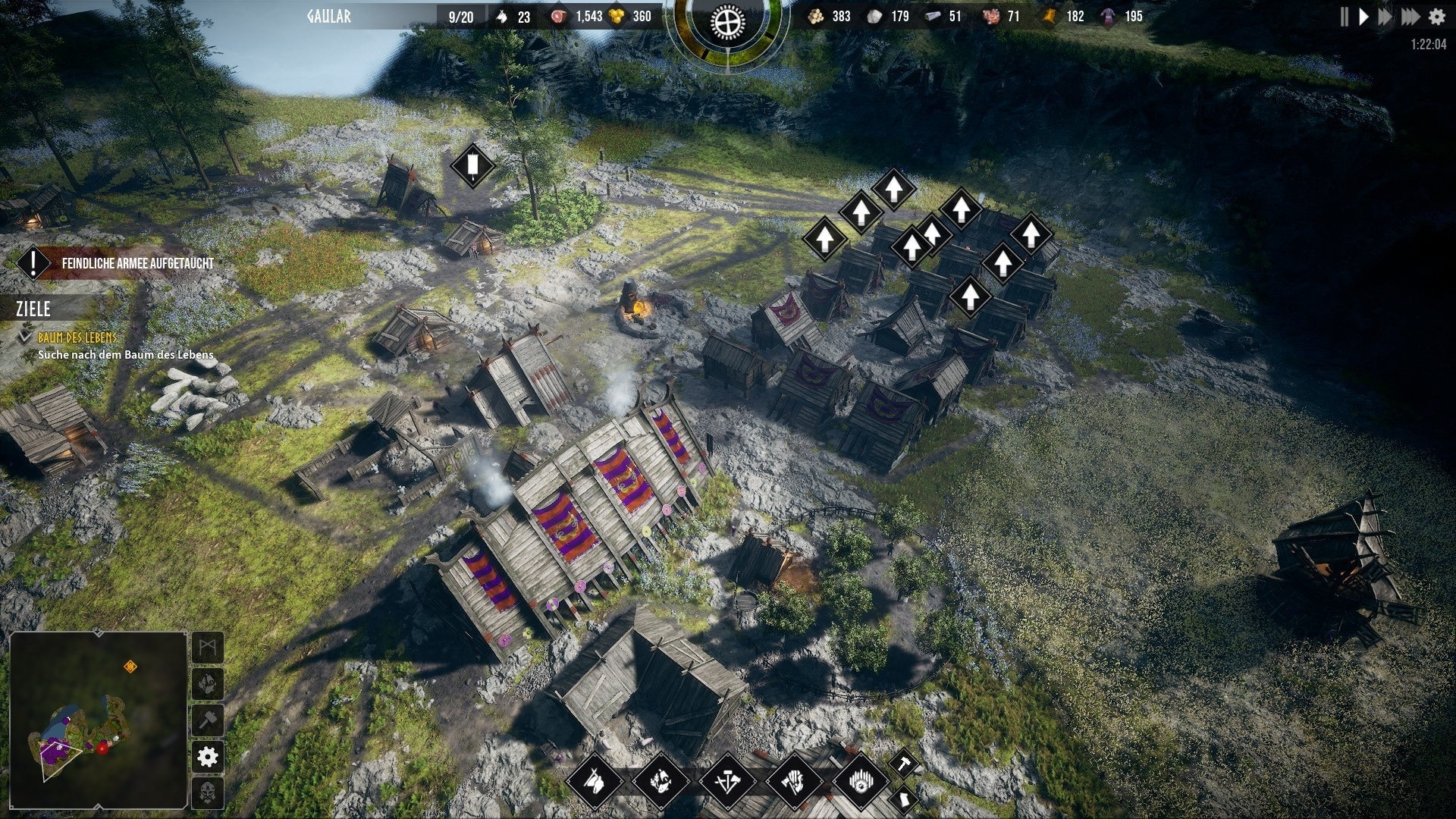
On the other hand, we can expect many elements that we know from Age of Empires or Warcraft with real-time battles, varied unit types, further development of the settlement and rudimentary research. However, the game speed is too slow for a pure real-time strategy game, because the construction part, the gathering of resources as well as the manual management of the villagers as well as their jobs takes up an enormous amount of space and at the same time also makes up a large part of the game”s appeal.
That”s not a bad thing – it”s just something you should know beforehand. Many of the negative Steam reviews criticise the game for not being a pure city builder. The genre mix is an interesting approach by the developers and a good idea on paper. But unfortunately they did not follow this path consistently.
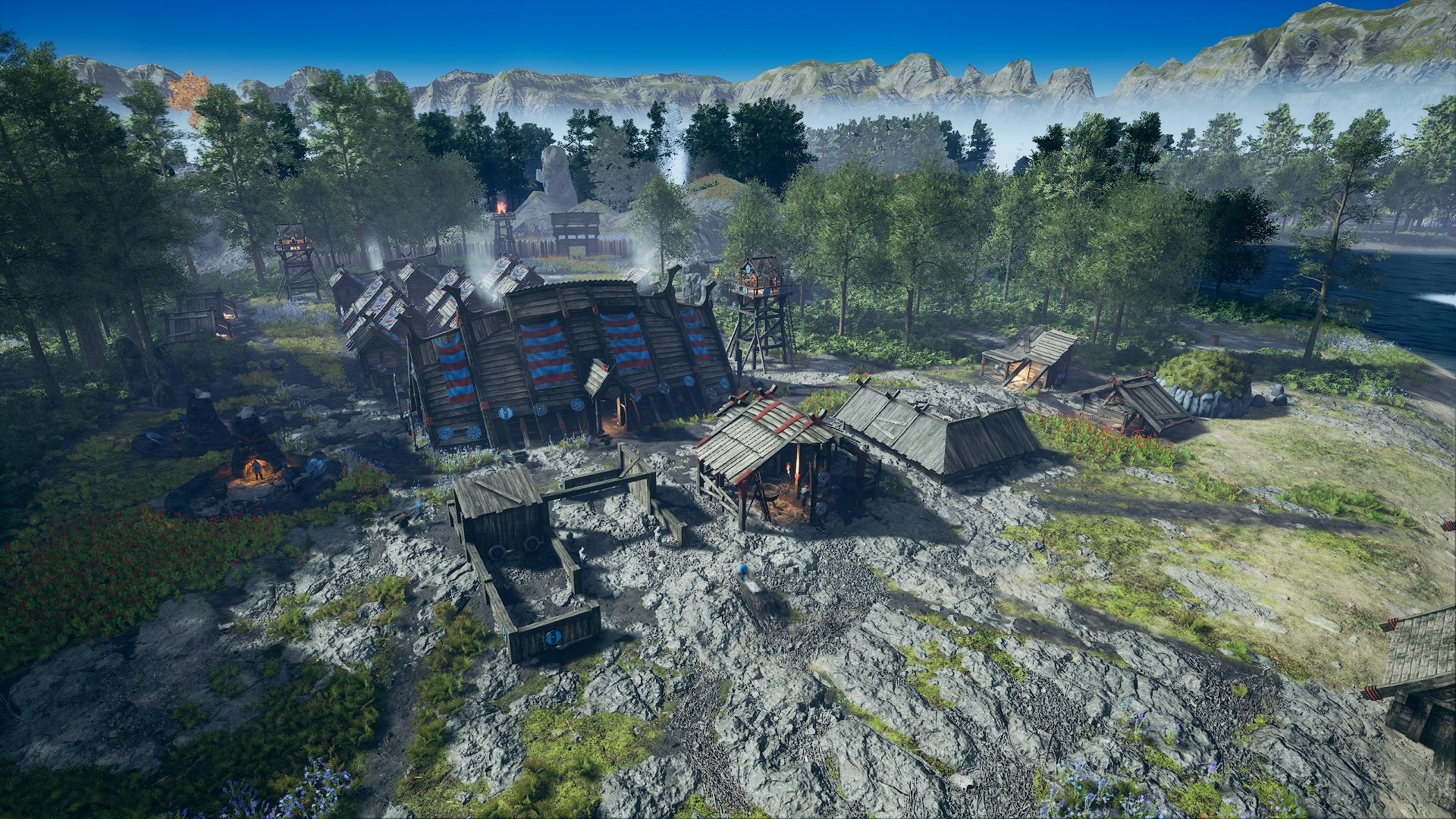
Banished with Vikings?
Whoever buys Frozenheim for just under 17 euros on Steam will get a lot in terms of content: In addition to a tutorial and a 16-mission campaign, whose plot elements are rather confused and abstract, you can compete against the computer or human players in multiplayer games or fight off endless waves of enemies in a survival mode. As is typical for the genre, you can also divide players into teams on the nine maps so that co-op games are possible.
But at the beginning of each game, battle glory and the resulting mead binge are as far away from you as an ancient Viking is from the Christian faith. The first thing to do is to collect resources. Wood, food and stones are most important at first, so that you can build buildings and supply the population. As in Banished, you build huts that supply you with inhabitants and manually distribute their labour to newly constructed buildings. For example, the woodcutter needs three forest axe fighters to supply you with building materials as efficiently as possible.
You can get stones and iron from depots visible on the surface, which you can mine with the Gatherers” Guild. When placing these buildings, you will see the available depots on the map and you will have to think strategically. By making sure that the walking distances are not too long, you avoid having to wait unnecessarily for raw materials.
Only when stones, iron, wood & co. have arrived in the main house called “House of the Jarl” are they available to you. A button familiar from Anno, which ensures that resource X from farm Y is collected immediately due to urgent need, was sorely missed during testing.
There is also no possibility to block resources for further processing. An example: Ralf, the Viking – battle name “Ragnaralle” – has fought bravely with his axe-wielding buddies Egil, Snorri, Harald and Vaði and defeated the enemy, some extremely vicious wolves. Unfortunately, all but Ralf are now already at the great mead table in Valhalla.
You can bring such decimated troops back to full strength at the training ground. This is a cheaper alternative to recruiting new troops and has the additional advantage that the unit retains the experience it has gained and the veteran status it has acquired.
In our case, this costs us, among other things, a few deer skins, which the hunter supplies. Bad luck for Ralf: The skins are also needed to make garments for archers. And because the industrious tanner immediately fetched the material from the storehouse, we can”t replenish the axe fighters.
This is annoying, because such bottlenecks often disrupt the flow of the game and could easily have been remedied in development. It is even more annoying when we lose our cherished veteran units in a hectic battle because of something like this. In this particular case, it didn”t take long for the animals of the forest to revolt again, Ralf followed his comrades-in-arms and now tells his heroic stories in the afterlife: “Wolves to my left, wolves to my right…!”
The pitfalls of settling
Anyhow, a certain amount of advance planning is necessary to avoid getting into trouble from the start – and we don”t mean a holiday resort in France: Should the collectors first mine stones or already iron? We could also set up two collectors” guilds, but that would tie up manpower that we need more elsewhere at the beginning. Of course, the solution could be more houses so that we have more inhabitants and more workers. But then they also want more food, which requires more fishing and hunting huts and somehow only shifts the problem.
Until then, Frozenheim works a lot like Banished. The difference to the hardcore survival game, however, is that relatively little can happen to your tribe. Even if you run out of food, you still have enough possibilities to correct the misery. If there is a lack of food or if you do not meet other needs of the inhabitants (such as proximity to certain buildings like the tavern), satisfaction will suffer. Left-click on each individual hut to display it on a scale of 1-10, where 10 means “Valhalla on earth” and 1 means “I”ll definitely consider axe murder as a solution to the problem if something doesn”t suit me here”. Dissatisfied residents then steal much-needed raw materials, further exacerbating the situation.
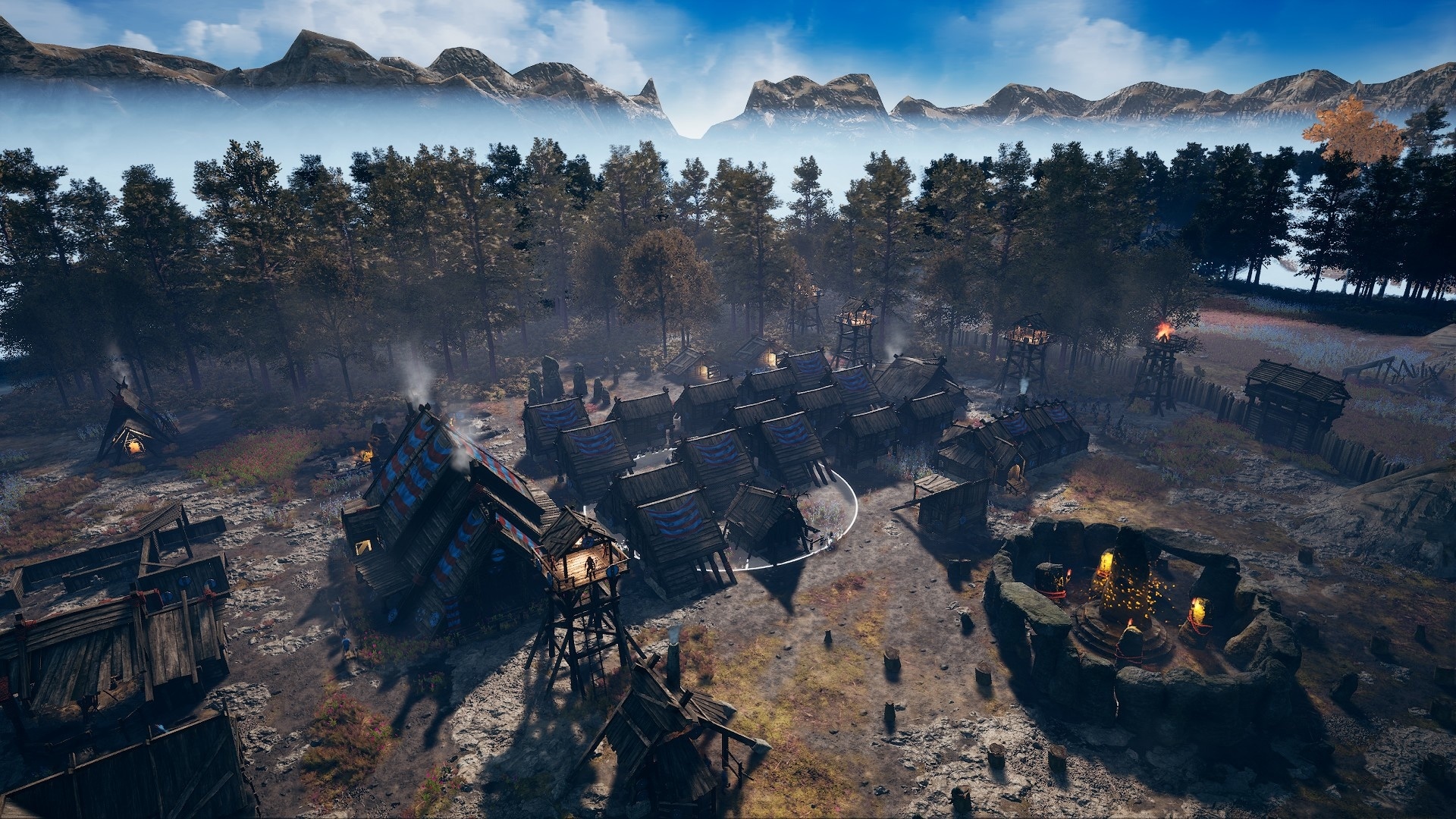
This all plays very well at first and makes perfect sense – but it lacks challenge. When playing, we practically never had problems keeping the satisfaction high and getting the maximum out of our settlement. Dissatisfaction has no real consequences. Of course, when playing you can get bogged down and in the worst case start over, but then it”s clear how things work. If you pay a little attention to the building order at the beginning and keep an eye on the availability of resources, you will have no problems building beautiful Viking settlements.
Keyword resources: They are finite. Forests can be cut down, stone and iron depots can be emptied. This creates a certain basic tension in the game, because there is no real feeling of relaxed settlement. If you want to maintain the status quo, you have to expand aggressively in some cases and, as in Civilization, recruit settlers to build outposts and erect buildings outside the construction area of your settlement.
Later in the game you can reforest deforested areas by using a miracle. On the one hand, this is possible only late in the game, and on the other hand, it does not solve the problems with the other materials. Trading via the marketplace is not really an alternative because of the horrendous prices.
Outposts – that is, several bases – lead to a larger share of the already very sprawling micromanagement in Frozenheim. Admittedly, single players can cushion this with the practical pause function. Nevertheless, it is a pity, as the focus of the contemplative settlements then shifts completely to expansion, development and ultimately combat.
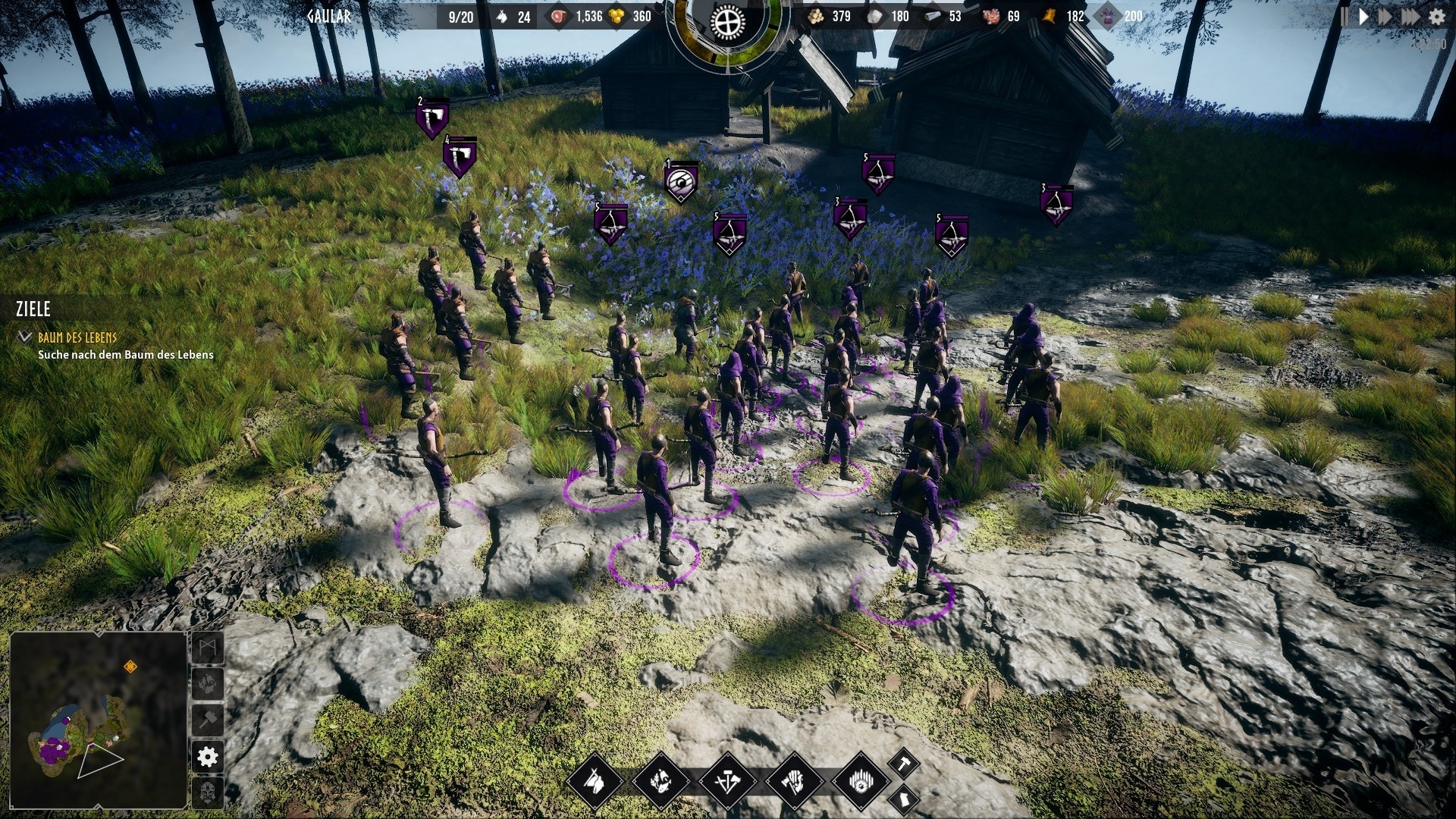
Real-time strategy with quirks
In the end, the goal in Frozenheim is not to have the most beautiful Viking settlement with the most inhabitants and the perfectly fulfilled conditions, but to defeat your opponent by destroying his main house and destroying his army. Throughout the campaign there are token objectives, such as reaching fixed waypoints, to advance the inconsequential plot. But even there, military conflict is always the means of choice.
Raising a strong economy is merely expedient to be able to raise new troops and throw them into battle. Besides the standard fighters with axe, spear, sword and bow, there are scouts for exploration and powerful siege weapons.
Since you can”t say “Viking” without “longboat”, the iconic watercraft are of course also on board (hehe). In the shipyard you can make small visual (sails, size, bow ornamentation) as well as playful (healing tent, more capacity for troops) customisations and then transport units or go into naval combat.
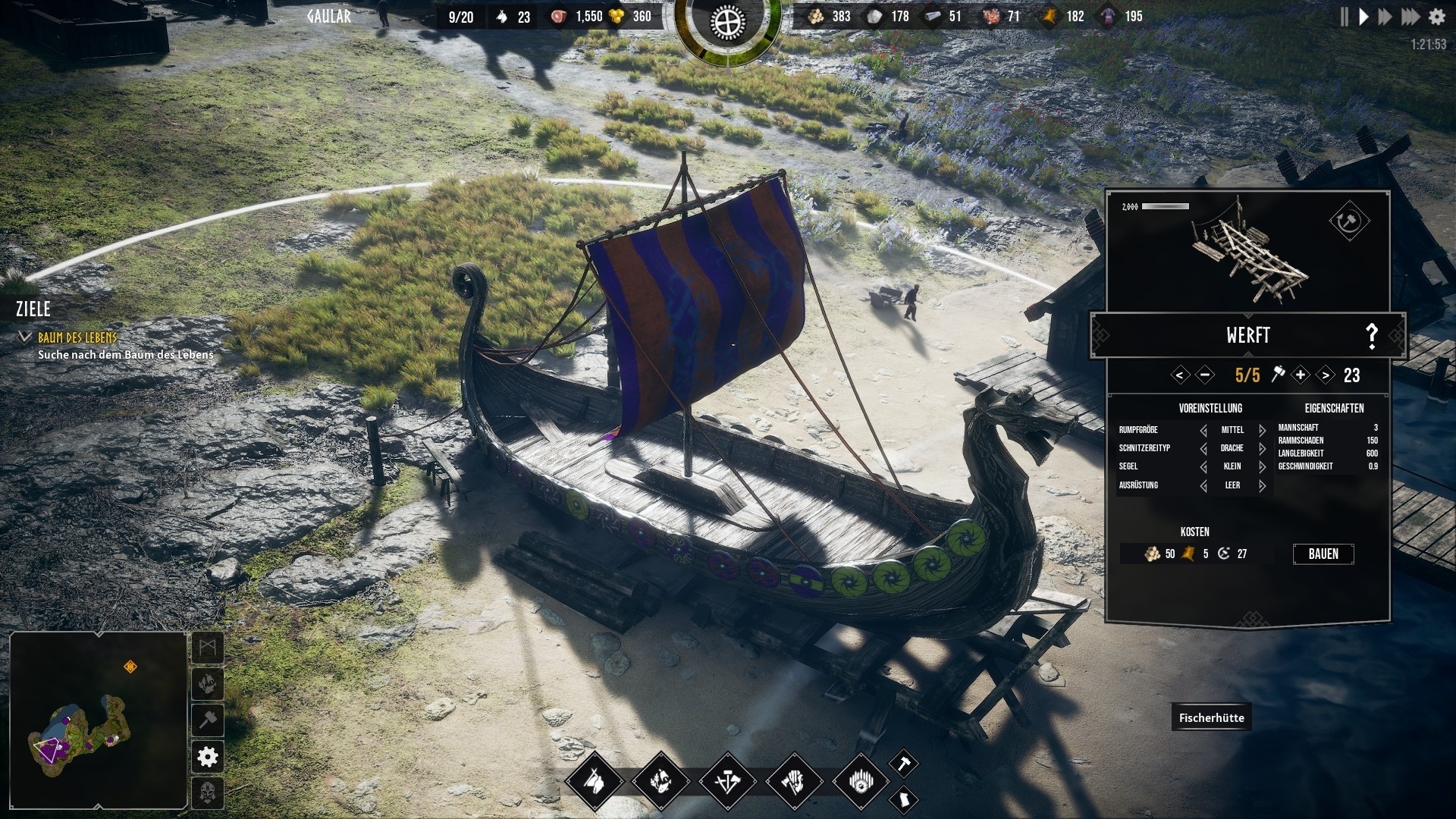
The operation of the units is very intuitive. Right-click to send them to their destination, double-click to make them run. Each unit has special skills that can be activated, which offer temporary bonuses for attack and defence values. A very good thing is that all special abilities are clearly presented at the bottom right of the screen, even if you have selected several unit types with different abilities. This means you no longer have to switch through the subgroups of the active troop as you did in Warcraft 3.
What is less good is that melee fighters run bluntly towards each other and, instead of attacking via the flank, simply move up if their colleague has fallen in front of them. Therefore, the battles also require micromanagement. In addition, there are a few balancing weaknesses. For example, we were astonished when our scouts high up on a cliff were killed with deadly precision by archers far below and directly in front of the cliff. Those Vikings were some devil dogs!
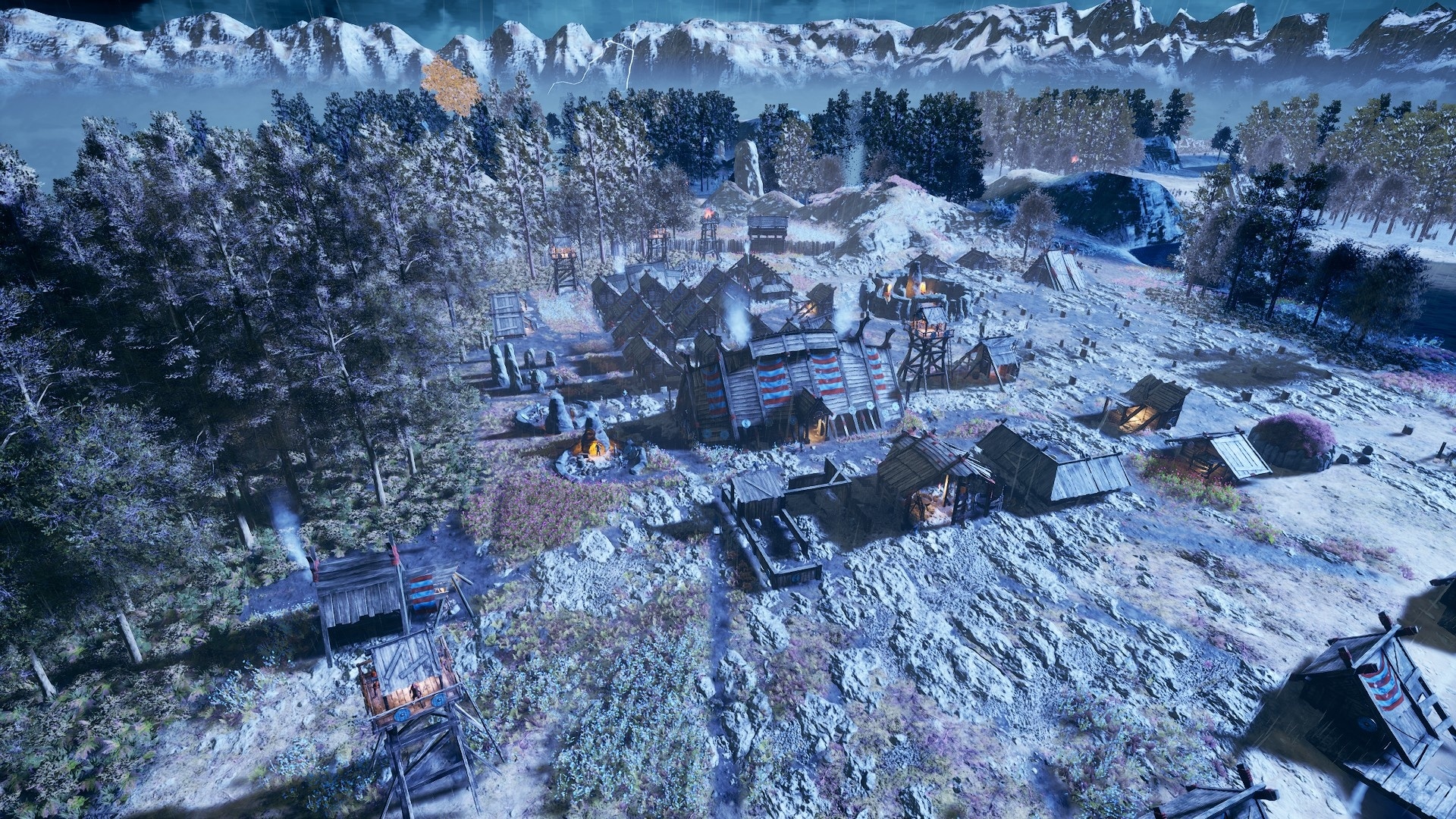
Deceptive idyll
While Frozenheim doesn”t really take off in any discipline due to the genre balancing act between building and real-time strategy, the visual presentation is a real stunner. Thanks to the Unreal Engine, we admire dense forests, rugged mountains and strong seas. Frozenheim also scores with a lot of detail, which greatly benefits the atmosphere.
You can zoom in so close to your units and buildings that you can watch the fire in the stove, observe the transport of goods or give the fishermen a thumbs up as the waves roll in the sea. The visuals of Frozenheim invite you to linger, to discover details, to build beautifully. It creates a classic “scurry atmosphere”, as you know it from the settlers, and contributes a considerable part to the outstanding building game feeling.
But the idyll is deceptive, because the game is unfortunately not about a quiet build-up, but about preparing for war. If it”s not other Vikings, wolves, bears and other wild animals will make your life difficult. Walls, gates and towers protect the settlement, but sooner or later you will have to expand.
In some missions you don”t even get a chance to sort yourself out, because you are attacked from several directions right from the start. However, Frozenheim”s strongest moments in the test were always when the real-time strategy identity of the game receded into the background and we could concentrate on settling, building and scurrying.
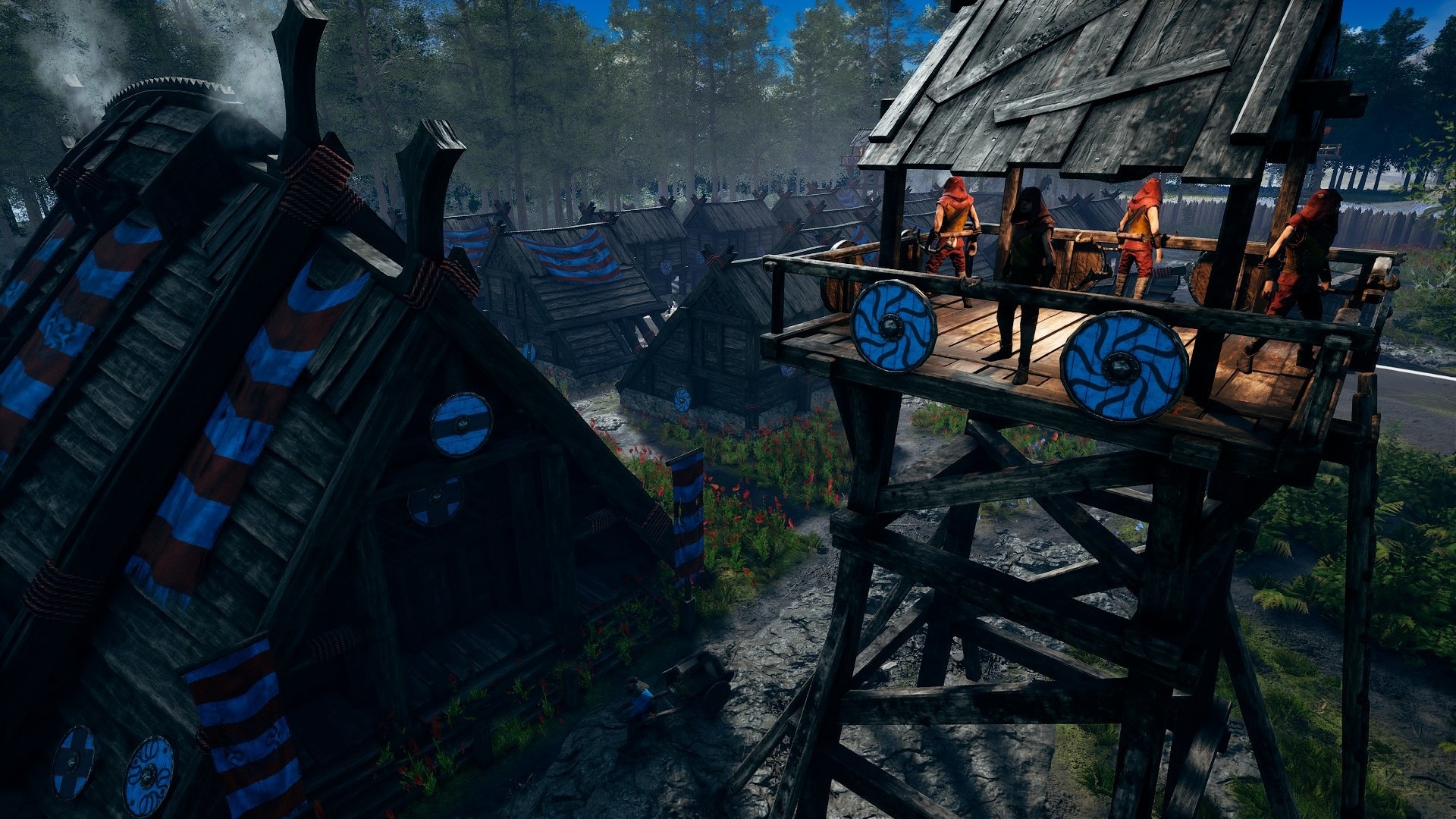
The fact that our troops speak Swedish does the atmosphere a lot of good. Just like the user interface, which is kept in black and white, pleasantly unagitatedly placed at the edges and yet keeps us well informed at all times. When we see our eager craftsmen and goods carriers walking trampling paths through the greenery that gradually become paths, when the whole settlement is snowed in and the fires blaze, when we look over the craftsmen”s shoulders as they work and take beautiful pictures thanks to the integrated photo mode – then we would prefer not to fight at all.
Please do not misunderstand: The battles are an essential part of the game and they are quite fun. When the arrows of our archers whiz through the air and we are delighted that the enemy infantry has not even made it to our line, we are just as much in our element as when we are building up. In our opinion, however, the developers should have tightened the screws further.
Editor”s verdict
Frozenheim is a great game that has already entertained me very well and will probably continue to do so for a while. So far, few games have managed to reignite that building fire in me like this. I enjoy sitting and tinkering with my settlement, measuring out spheres of influence, adjusting resource production to consumption and, thanks to this insanely beautiful graphics, watching the Northmen and Northwomen at work.
But just when I really want to sink into the game, I notice the rough edges. Why can”t I control the distribution of goods? Why does dissatisfaction have no noticeable consequences? Why can I level up my main house so much when the construction part is always pushed into the background in the course of a game anyway? And why are opponents constantly bugging me and keeping me from settling?
Okay, because the game also wants to be a real-time strategy game. That”s not wrong, and it would be a bit monotonous without the battles and the goals associated with them. But even in the combat part I often stumble across inconsistencies: Why can I choose between several clans with various bonuses if it doesn”t matter in the end anyway? Why should I upgrade and develop units when I can already make a big splash with a handful of the starting units? Why should I build up units at all if I can simply work through the objectives and waypoints in the campaign? In this respect, there is simply too little interplay.
Frozenheim shows very interesting approaches – and it is very disappointing to see that these approaches simply end as soon as they become exciting for the player. So the only conclusion that remains is that Frozenheim is a good game with first-class visuals and what for me is a unique interpretation of the setting. But the developers” claim to create a “city-building simulation with sophisticated management gameplay and real-time strategy battles” has failed in the final analysis.

